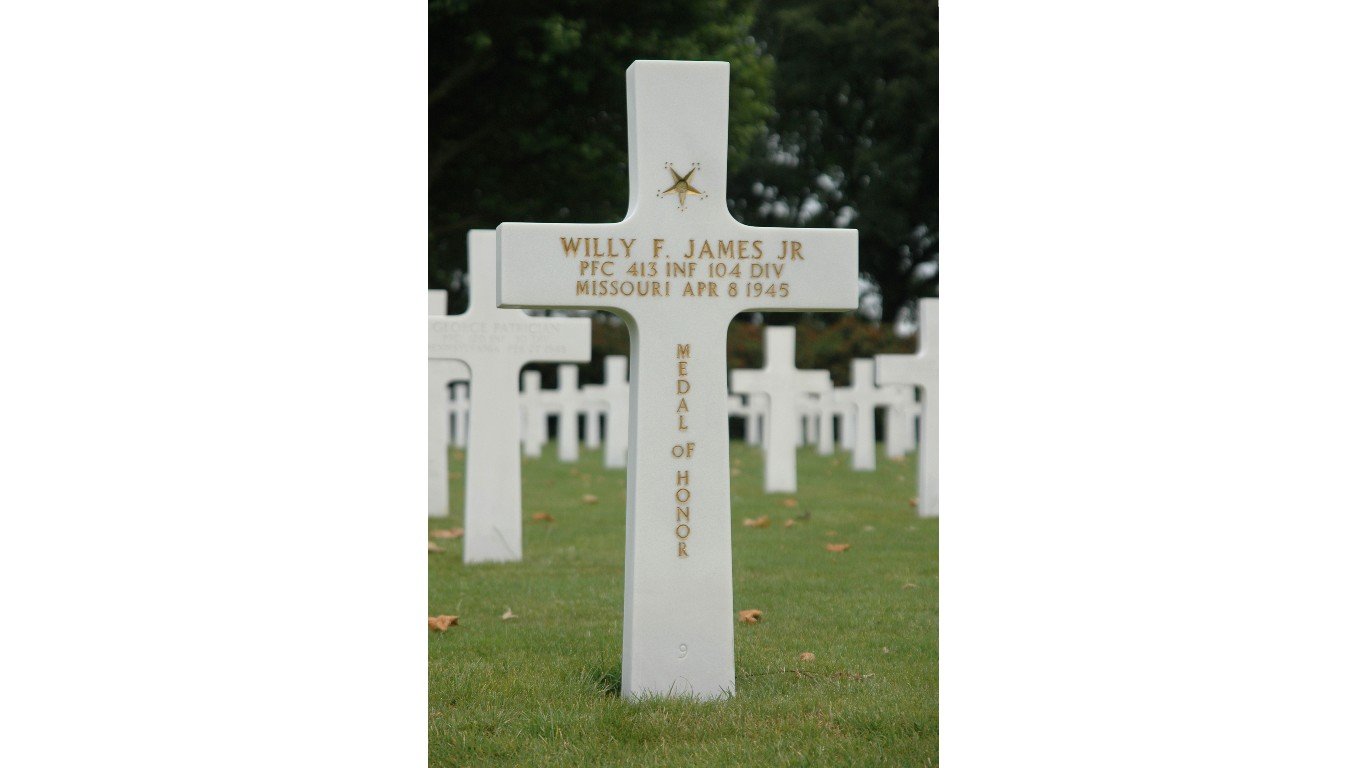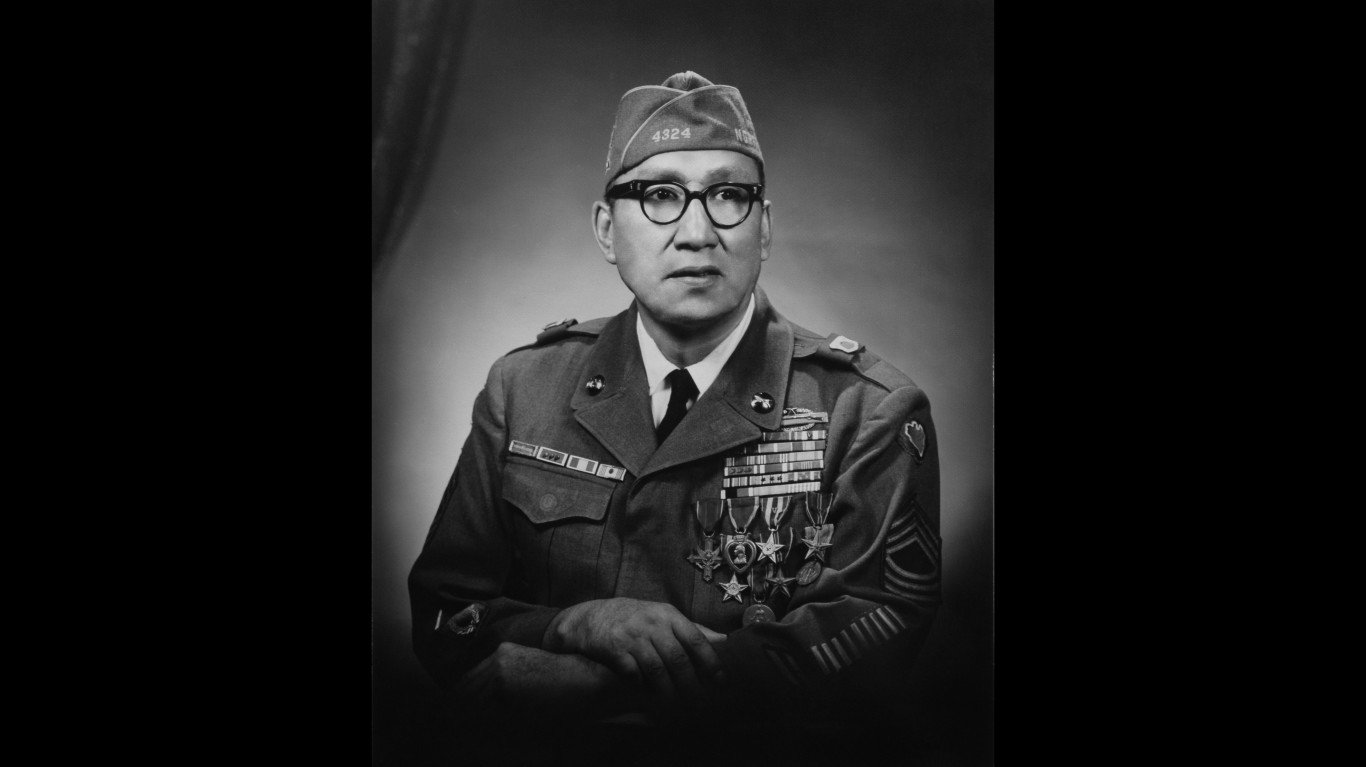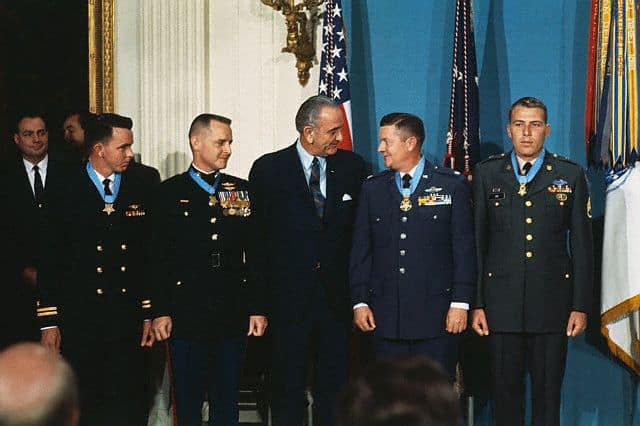

The highest military distinction awarded in the US military is the Medal of Honor. The President of the United States presents this to soldiers who distinguished themselves through acts of bravery, courage, sacrifice, and integrity and going above and beyond the call of duty. (Here is every medal and ribbon the U.S. military awards, ranked.)
24/7 Wall St. reviewed the Congressional Medal of Honor Society‘s database of recipients throughout history to identify the most impressive recipient attributed to each state. It should be noted that for a recipient to be attributed to a certain state, they did not need to be born in that state, but rather enlist there. Information about the recipient and the number of total medals attributed to the state also came from the CMOHS database. The recipient’s rank is the rank at the time of action the medal was awarded.
Nineteen men received two medals for actions in different wars, and many are listed as the most impressive in their state. Others on the list made major breakthroughs, such as the first Black American or the first and only woman. (Here are the most decorated war heroes in American history.)
Here is a look at the most impressive Medal of Honor Recipient in every state.
Alabama: William Robert Lawley Jr.
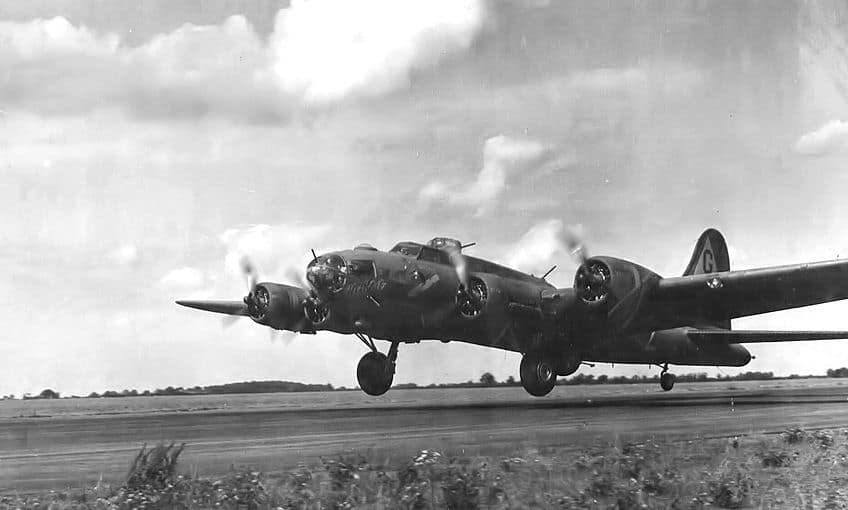
- Rank: First Lieutenant
- War during which medal was earned: World War II
- Military branch: U.S. Army Air Corps
- Medal of honor recipients attributed to state: 21 — 18th fewest
1st Lt. William Robert Lawley, a B-17 pilot, was flying over enemy-occupied Europe on Feb. 20, 1944. Despite being seriously wounded, having a crippled plane, and losing his copilot, Lawley managed to evade enemy fighters, control an engine fire, and make a successful crash landing. He did this to save two severely wounded crewmembers, refusing to abandon them despite the risk and his own exhaustion.
Alaska: None

- Rank:
- War during which medal was earned:
- Military branch:
- Medal of honor recipients attributed to state: 0 — the fewest
Alaska has no Medal of Honor recipients.
Arizona: John Henry Pruitt
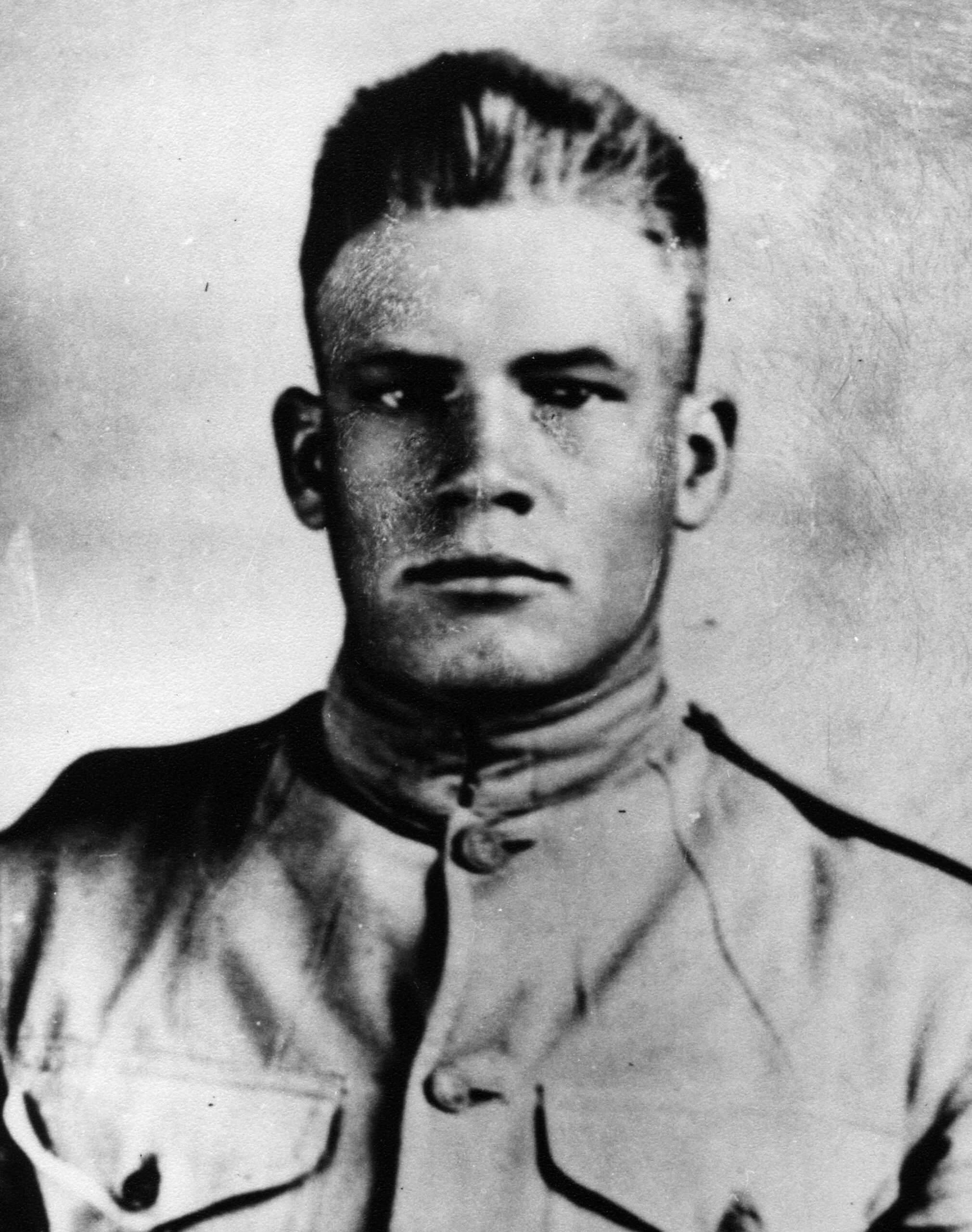
- Rank: Corporal
- War during which medal was earned: World War I
- Military branch: U.S. Marine Corps
- Medal of honor recipients attributed to state: 14 — 13th fewest
A veteran of the 6th Marine Regiment in WWI, Cpl. John Pruitt is remembered for his remarkable courage during the Battles of Belleau Wood, Chateau-Thierry, and Blanc Mont Ridge. He captured an enemy machine gun and 40 prisoners single-handedly before dying from enemy shell fire, earning him three Silver Stars and posthumous Medals of Honor from both the Army and Navy.
Arkansas: James Richard Hendrix

- Rank: Private
- War during which medal was earned: World War II
- Military branch: U.S. Army
- Medal of honor recipients attributed to state: 11 — 10th fewest
On Dec. 26, 1944, near Assenois, Belgium, Pvt. James Richard Hendrix, compelled to surrender from two artillery gun crews, took out hostile machine guns under heavy fire to aid wounded comrades and risked his life through enemy sniper fire and exploding mines to rescue a soldier from a burning vehicle.
California: Ty Michael Carter
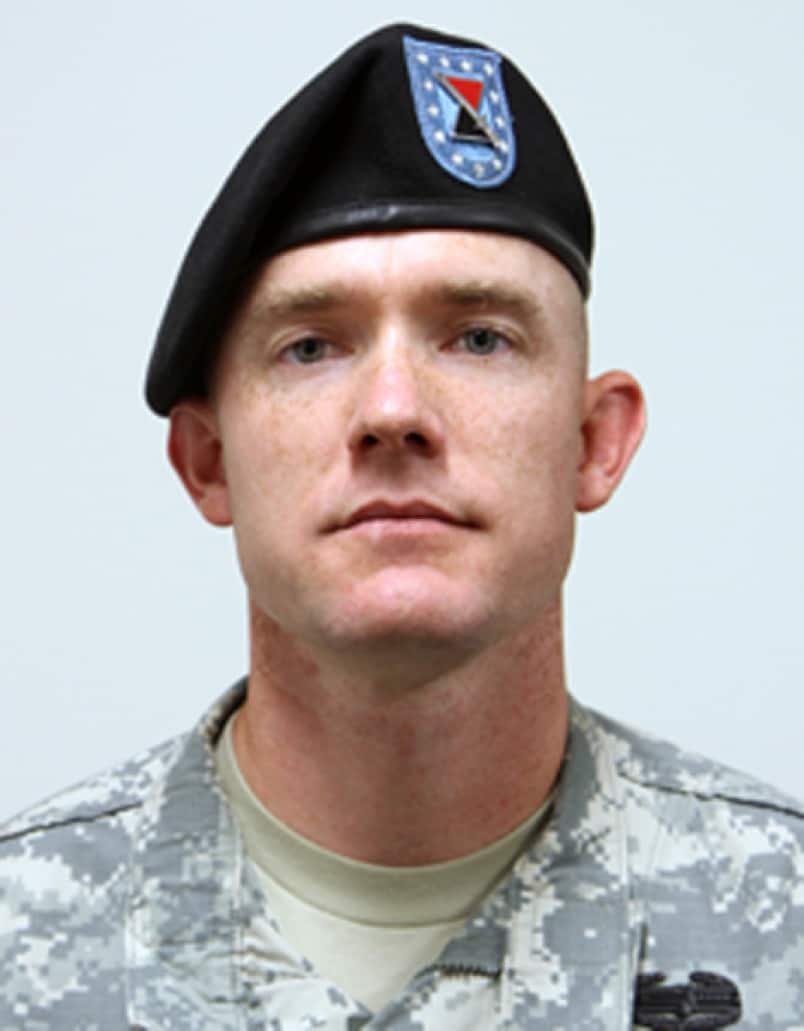
- Rank: Specialist
- War during which medal was earned: War On Terrorism (Afghanistan)
- Military branch: U.S. Army
- Medal of honor recipients attributed to state: 138 — 6th most
Spc. Ty M. Carter displayed extraordinary heroism during the combat in Afghanistan in 2009 by repeatedly braving enemy fire. He resupplied ammunition and alone defended a vulnerable position armed with only a M4 carbine rifle. He also rescued a critically wounded comrade and saved the lives of other soldiers. If it were not for his actions, Outpost Keating would have been captured.
Colorado: Drew Dennis Dix
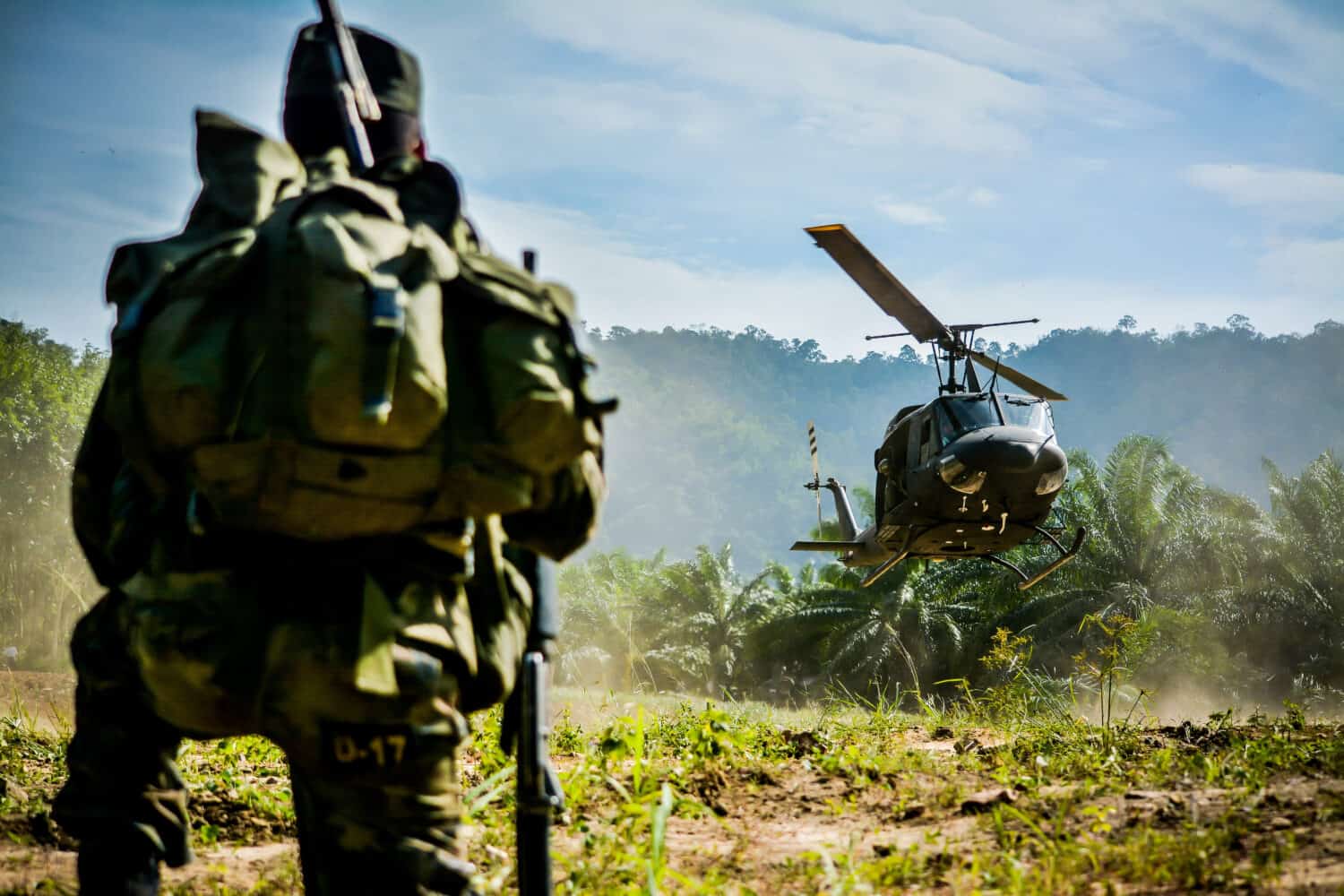
- Rank: Staff Sergeant
- War during which medal was earned: Vietnam War
- Military branch: U.S. Army
- Medal of honor recipients attributed to state: 23 — 21st fewest
Staff Sergeant Drew Dennis Dix was a unit adviser to the Army of the Republic of Vietnam. He played a critical role to defend the city of Chau Phu from two Viet Cong battalions. He saved a nurse and eight civilian employees while leading quite a few rescue missions. He also rescued two Filipinos and cleared the city’s hotel, theater, and other buildings. Seeing his actions, local soldiers joined the fight. This caused 14 Viet Cong to be shot down while 20 more were captured. All in all, he helped to rescue 14 civilians and captured 20 prisoners and 15 weapons.
Connecticut: John A Chapman
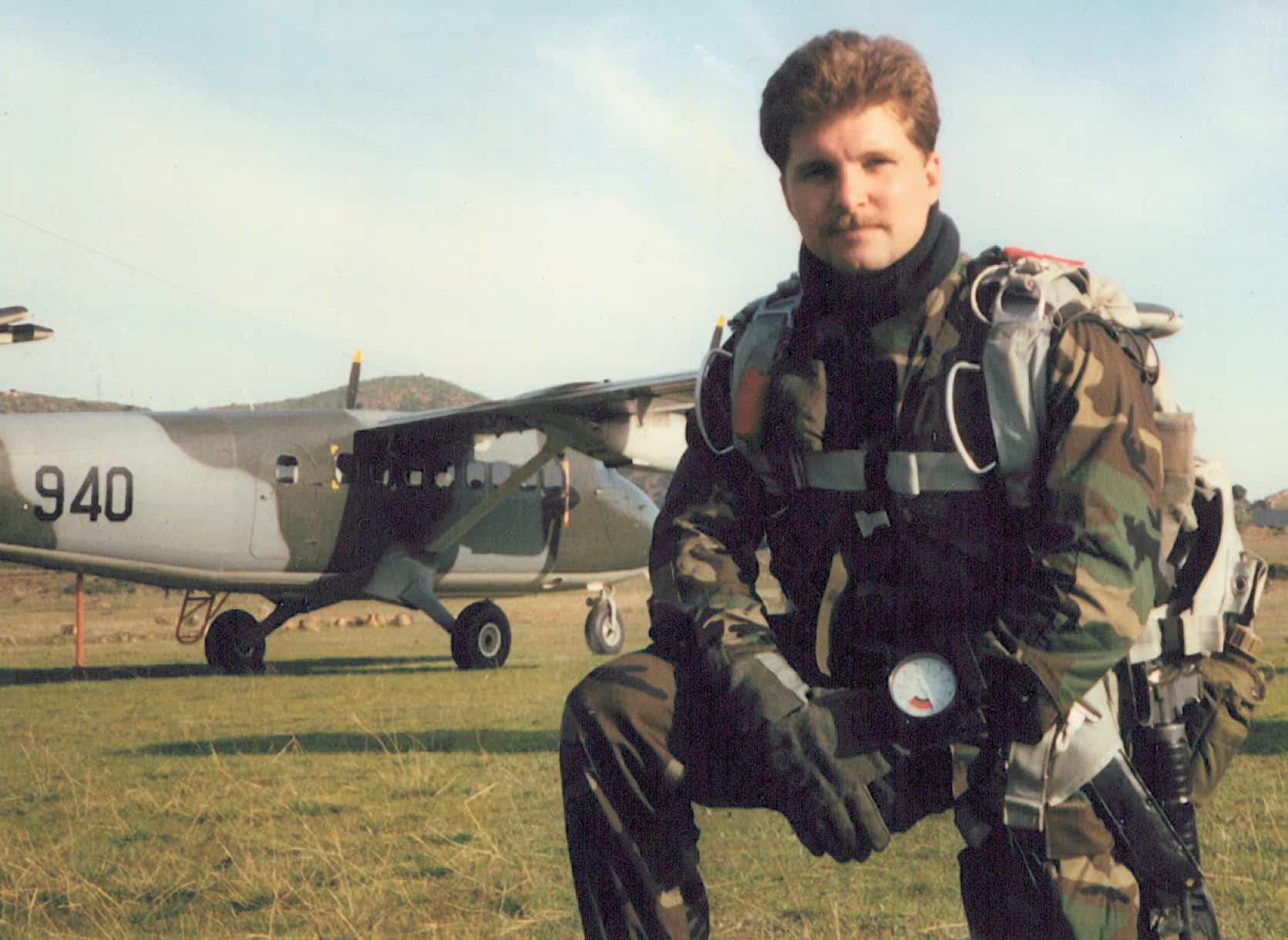
- Rank: Technical Sergeant
- War during which medal was earned: War On Terrorism (Afghanistan)
- Military branch: U.S. Air Force
- Medal of honor recipients attributed to state: 56 — 14th most
Tech. Sgt. John A. Chapman received the medal for actions during a mission in Takur Ghar, Afghanistan, on March 4, 2002. To rescue a teammate, he voluntarily reinserted into enemy territory. While moving uphill through deep snow, he assaulted two enemy bunkers under intense fire. He ultimately succumbed to his wounds.
Delaware: James Phillip Connor
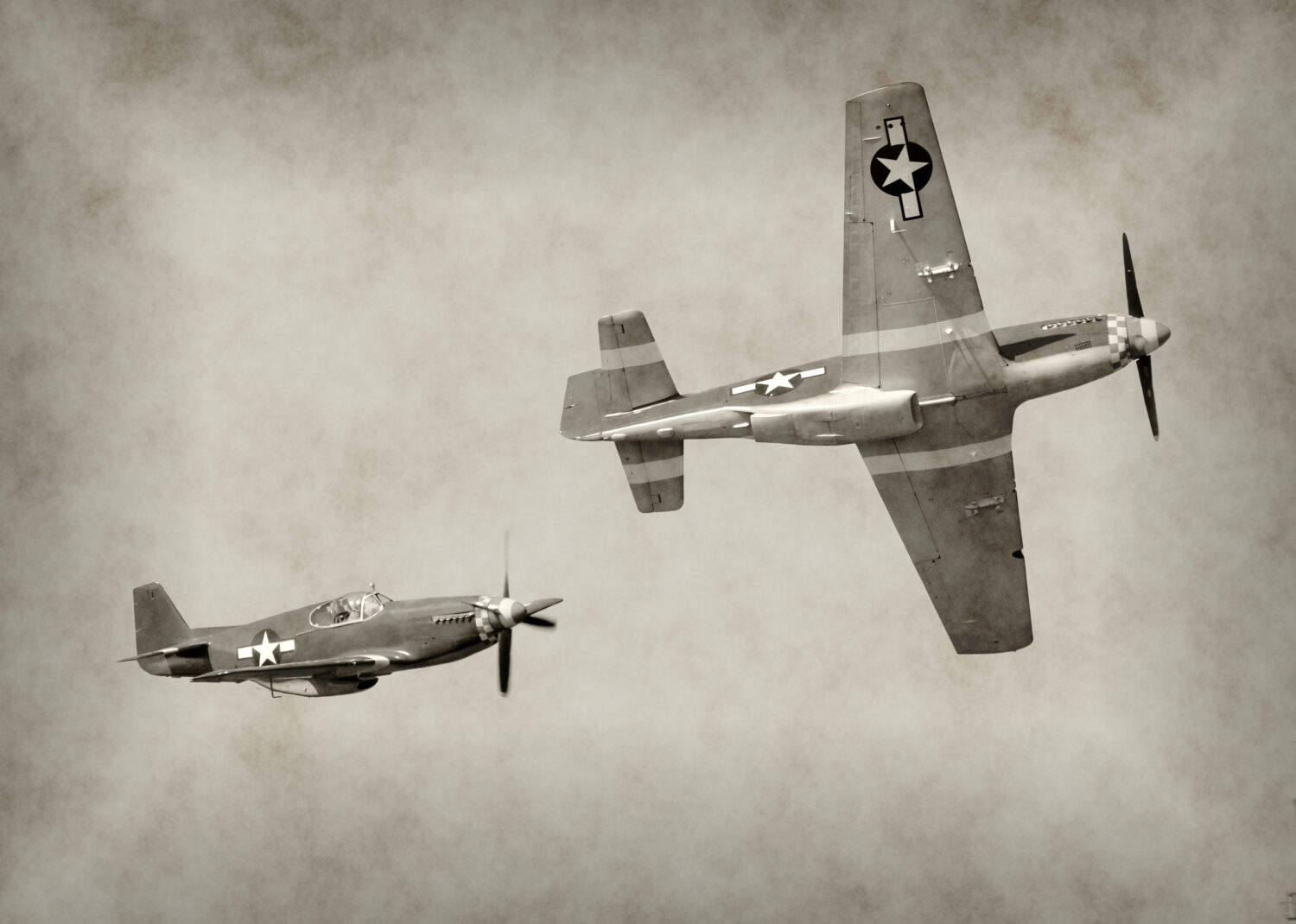
- Rank: Sergeant
- War during which medal was earned: World War II
- Military branch: U.S. Army
- Medal of honor recipients attributed to state: 13 — 11th fewest
On Aug. 15, 1944, during the southern France amphibious landing, Sgt. James Phillip Connor led his platoon to overcome a numerically superior enemy at Cape Cavalaire. He was seriously wounded three times but refused medical aid. He personally eliminated threats and therefore inspired his depleted platoon to complete their mission. He took out seven enemies and captured 40 more. He also seized key material and secured all of the platoon’s assigned objectives.
Florida: Robert Ronald Ingram
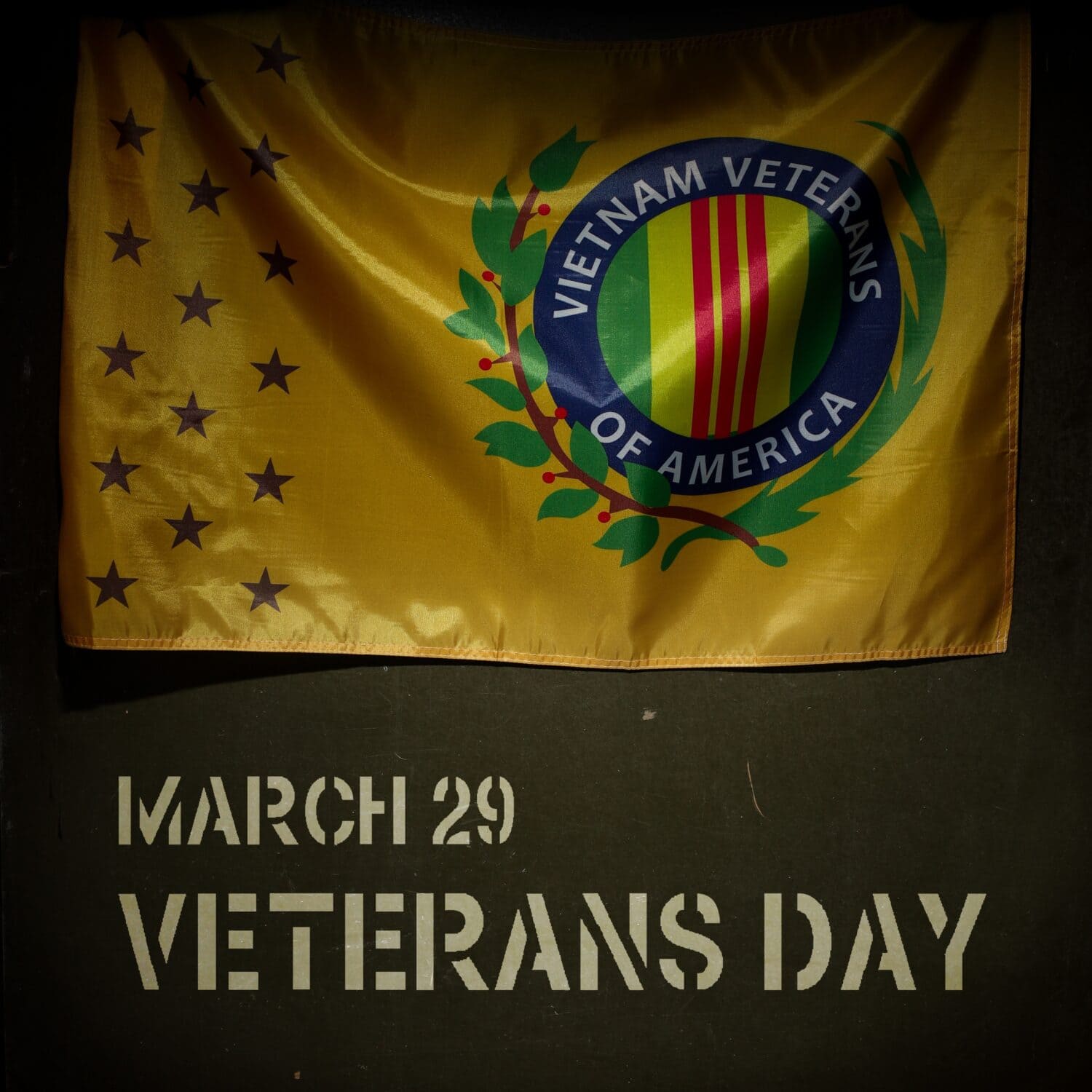
- Rank: Hospital Corpsman 3rd Class
- War during which medal was earned: Vietnam War
- Military branch: U.S. Navy
- Medal of honor recipients attributed to state: 23 — 22nd fewest
On March 28, 1966, Petty Officer 3rd Class Robert Ronald Ingram of the U.S. Marines displayed exceptional bravery when he faced fire from more than 100 North Vietnam Aggressors in Quang Ngai Province, Vietnam. He was wounded four times, but in spite of that, he provided medical aid to his comrades. By doing this, he saved the lives of many of his fellow soldiers.
Georgia: Joe Madison Jackson

- Rank: Lieutenant Colonel
- War during which medal was earned: Vietnam War
- Military branch: U.S. Air Force
- Medal of honor recipients attributed to state: 22 — 20th fewest
Lt. Col. Joe Madison Jackson volunteered for a rescue mission at the special forces camp at Kham Duc. He was a C-123 pilot and landed his aircraft in a hostile area to rescue a three-man Air Force Combat Control Team. This was done under constant, intense enemy fire and rapidly deteriorating weather. During the operation, a rocket landed in the nose of the aircraft but did not explode.
Hawaii: Daniel K Inouye

- Rank: First Lieutenant
- War during which medal was earned: World War II
- Military branch: U.S. Army
- Medal of honor recipients attributed to state: 7 — 5th fewest
During an attack in San Terenzo, Italy on April 21, 1945, 2nd Lt. (then 1st Lt.) Daniel K. Inouye, ed his platoon through intense enemy fire and personally neutralized several enemy positions, despite being wounded. His extraordinary heroism and leadership resulted in the capture of a strategic ridge and the defeat of 25 enemy soldiers.
Idaho: David Bruce Bleak
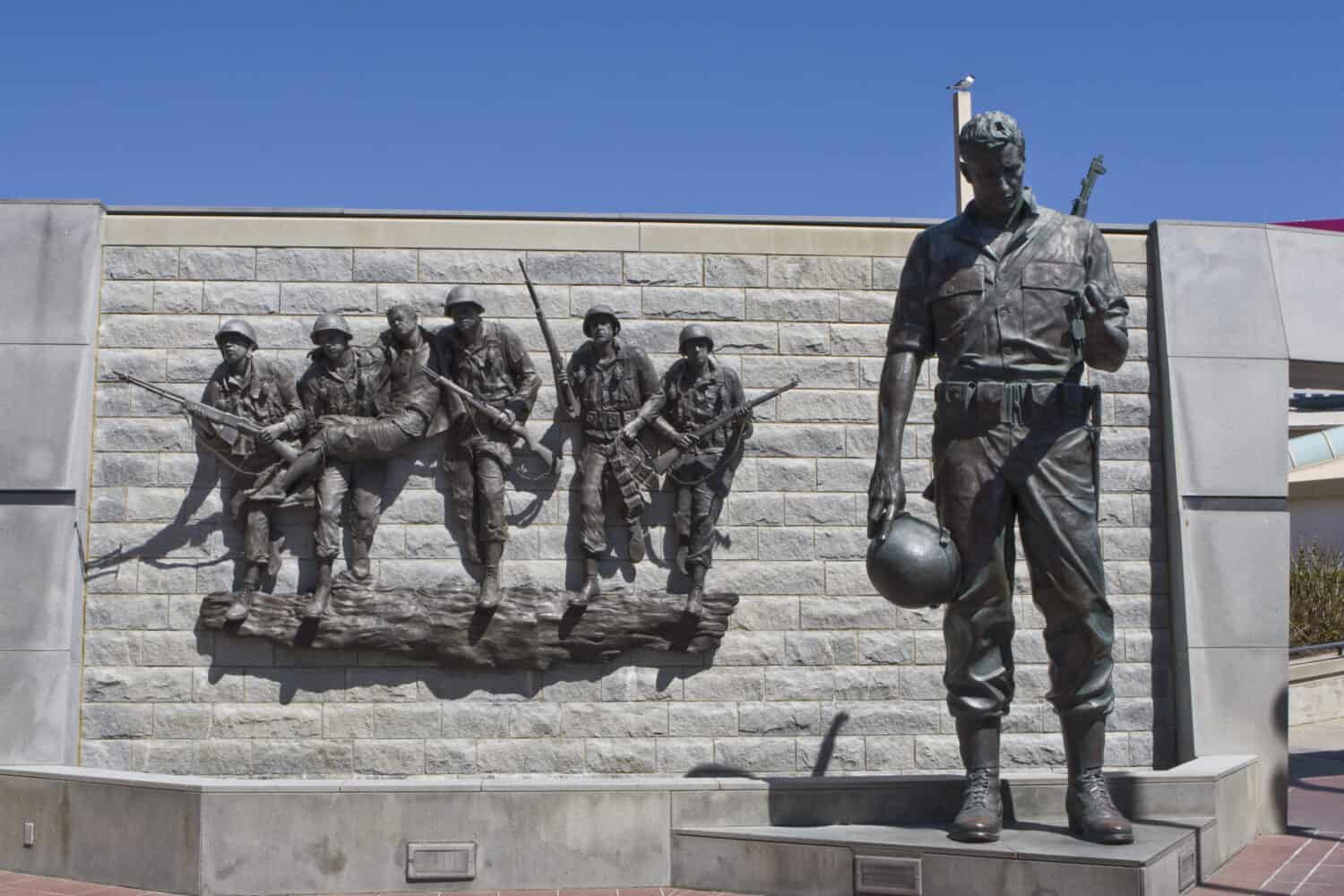
- Rank: Sergeant
- War during which medal was earned: Korean War
- Military branch: U.S. Army
- Medal of honor recipients attributed to state: 10 — 9th fewest
Sgt. David Bruce Bleak, a medical aidman, under heavy enemy fire, treated wounded comrades. He got rid of enemy soldiers in close combat, also with his bare hands. He furthermore shielded a fellow soldier from a grenade blast. He carried a fellow wounded soldier downhill when he was attacked by two enemies with fixed bayonets. Here he knocked together the heads of the two soldiers and saved himself and his fellow soldier.
Illinois: Vito R Bertoldo
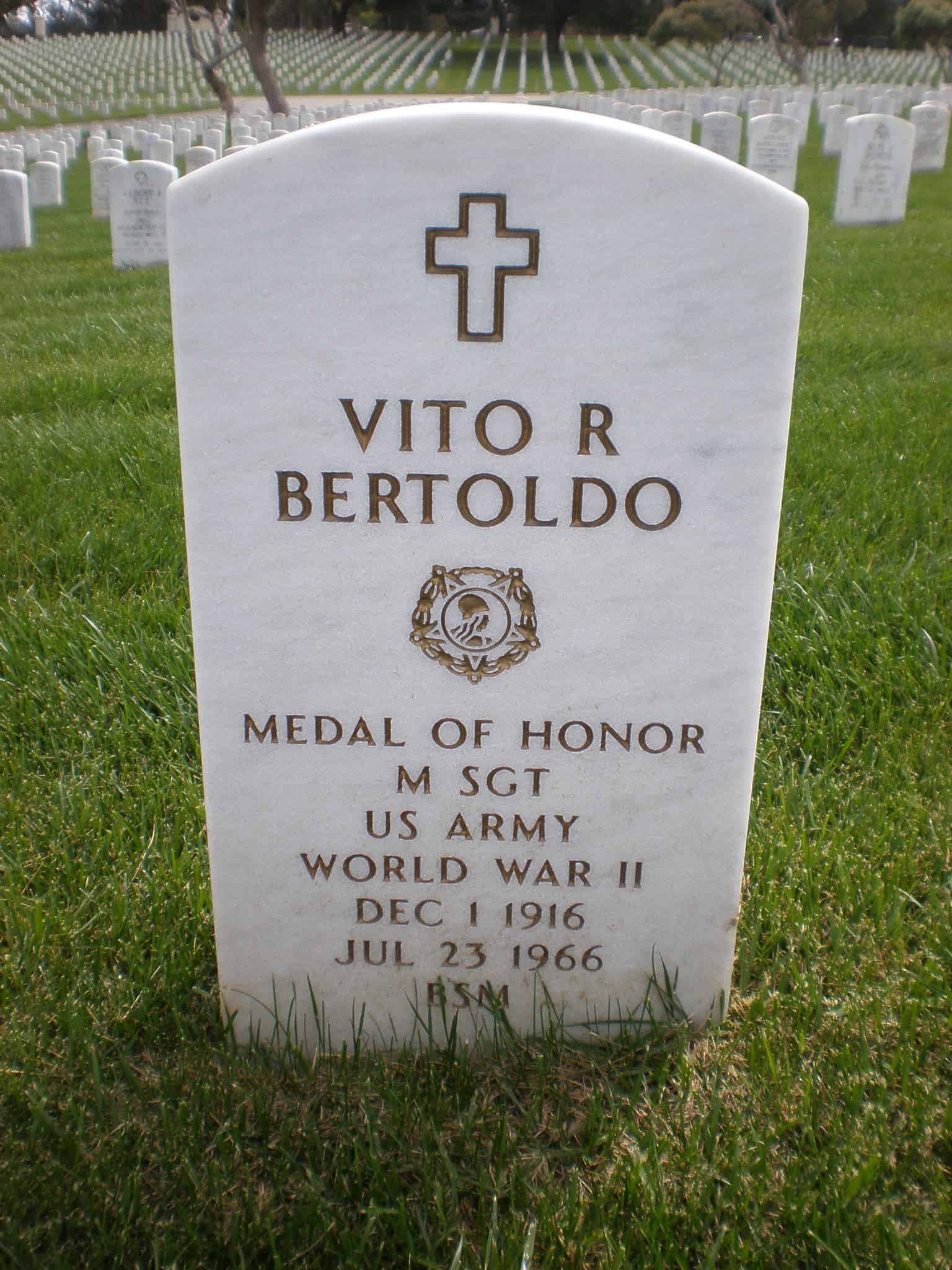
- Rank: Master Sergeant
- War during which medal was earned: World War II
- Military branch: U.S. Army
- Medal of honor recipients attributed to state: 207 — 5th most
Master Sgt. Vito R Bertoldo used a machine gun and grenades to thwart numerous attacks during a 48-hour defense against a vastly larger enemy force. He personally got rid of at least 40 enemy soldiers. This helped his fellow soldiers to withdraw safely. All this despite having been blown across the room twice, first by an 88mm shell and then by a tank shell from just 50 yards away. He just got up and returned to his post immediately.
Indiana: Richard Nott Antrim

- Rank: Lieutenant
- War during which medal was earned: World War II
- Military branch: U.S. Navy
- Medal of honor recipients attributed to state: 74 — 12th most
In April 1942, Cmdr. (then Lt.) Richard Nott Antrim earned widespread respect from both the captors and his fellow prisoners. He was a prisoner of war in Macassar, Celebes, Netherlands East Indies. When he witnessed the brutal beating of a fellow naval officer by a Japanese guard, he offered to take the further punishment. By doing this he not only saved a fellow officer but also improved camp conditions.
Iowa: Junior Dean Edwards
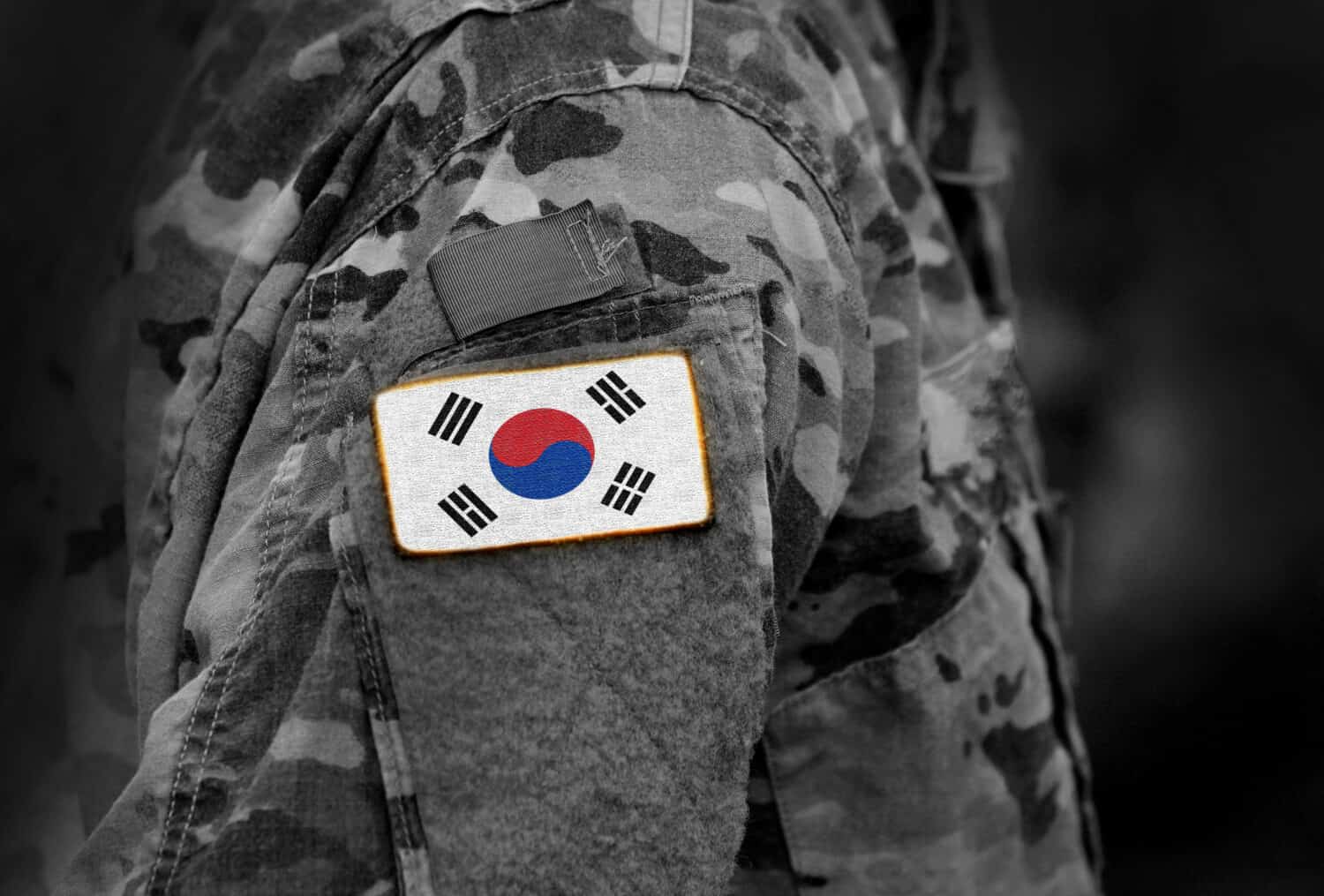
- Rank: Sergeant First Class
- War during which medal was earned: Korean War
- Military branch: U.S. Army
- Medal of honor recipients attributed to state: 54 — 15th most
Sgt. 1st Class Junior Dean Edwards of Company E was mortally wounded when he, on his own, charged enemy machine gun positions and neutralized them with grenades. He did this three times despite intense enemy fire. His platoon could hold a strategic position because of his heroic actions.
Kansas: Henry Hogan
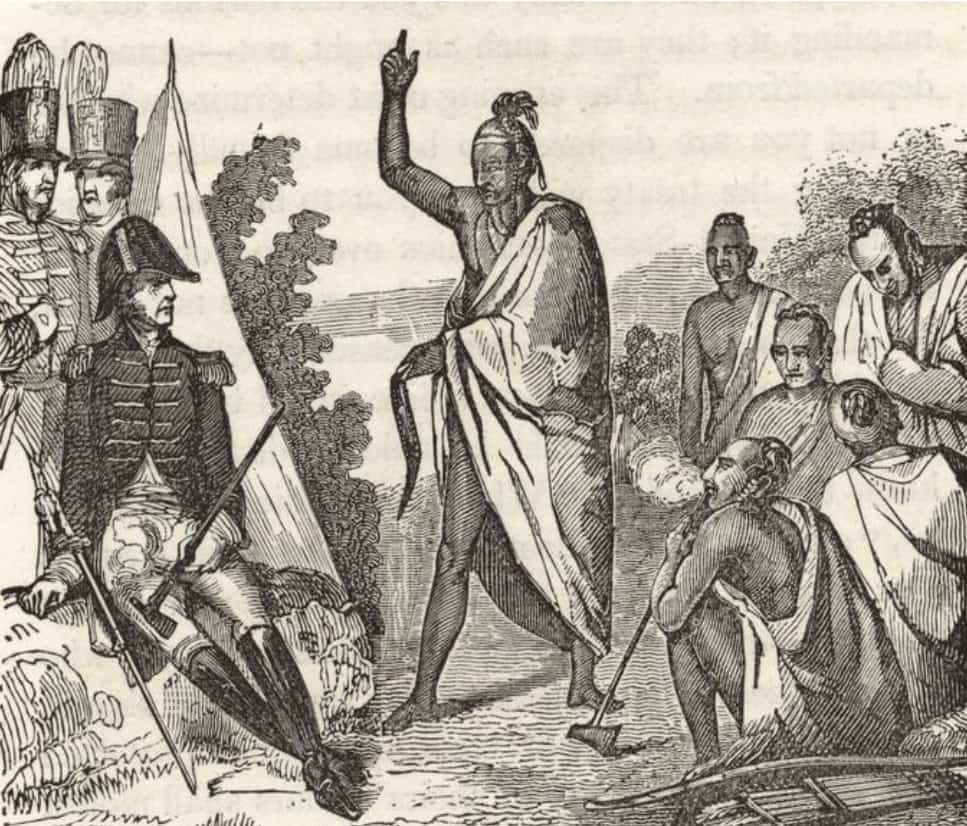
- Rank: Private
- War during which medal was earned: Indian Campaigns
- Military branch: U.S. Army
- Medal of honor recipients attributed to state: 28 — 24th fewest
Pvt. Henry Hogan, an Irish-born soldier in Company G, 5th U.S. Infantry is one of a few soldiers who received the Medal of Honor twice. He first received it for “gallantry in action” at Cedar Creek, Montana (1876-1877). He then rescued the severely wounded Lt. Henry Romeyn, and received another medal for his actions under heavy gunfire at Bear Paw Mountain.
Kentucky: Mary Edwards Walker
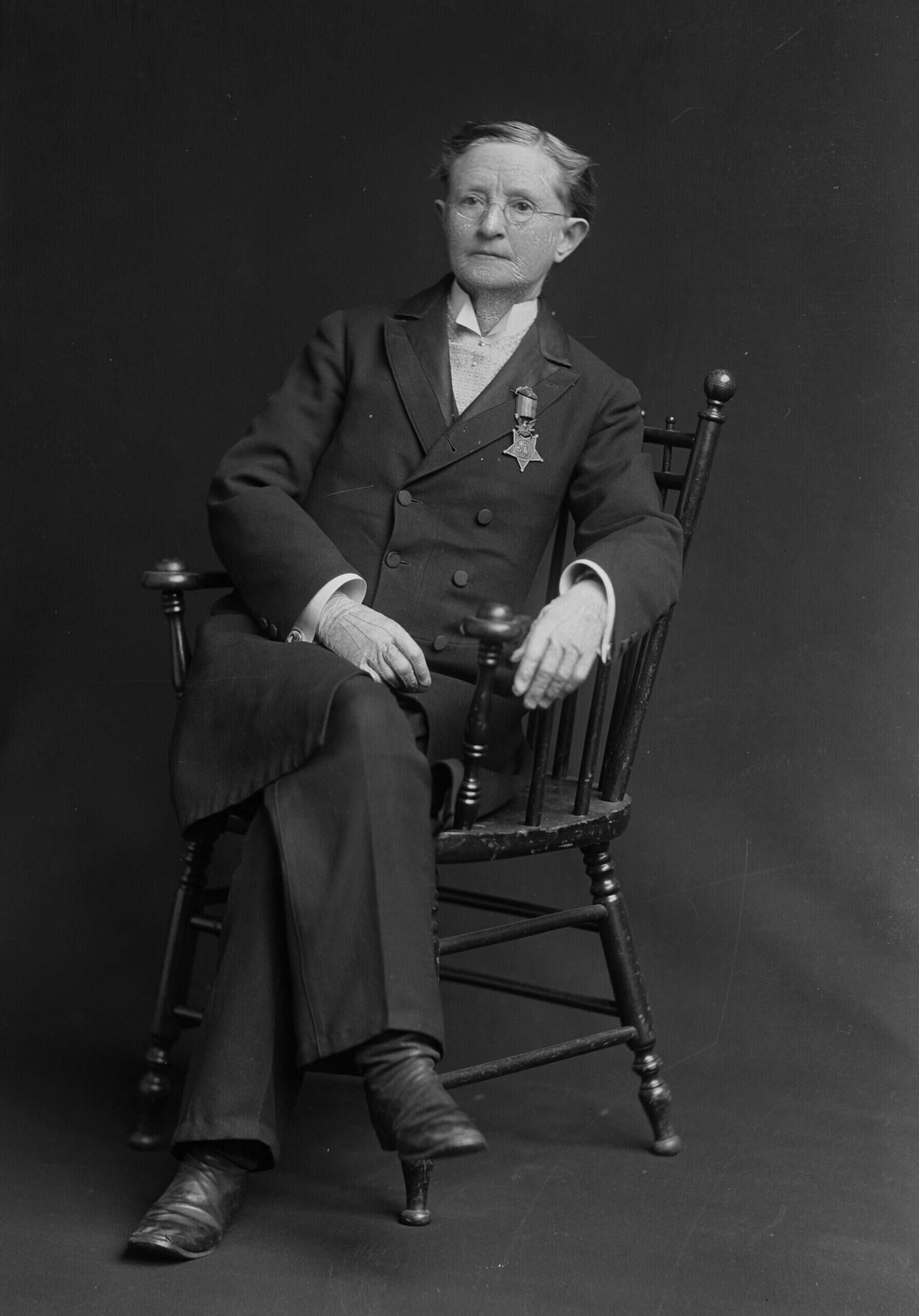
- Rank: Contract Surgeon
- War during which medal was earned: U.S. Civil War
- Military branch: U.S. Army
- Medal of honor recipients attributed to state: 43 — 21st most
Dr. Mary E. Walker is the only woman to receive the Medal of Honor. She served as a voluntary field surgeon for the Union Army during the Civil War, providing critical medical aid to both sides. She endured hardships as a contract surgeon and also spent four months as a prisoner of war. She was awarded the Medal of Honor in 1865 by President Andrew Johnson.
Louisiana: Jefferson Joseph Deblanc
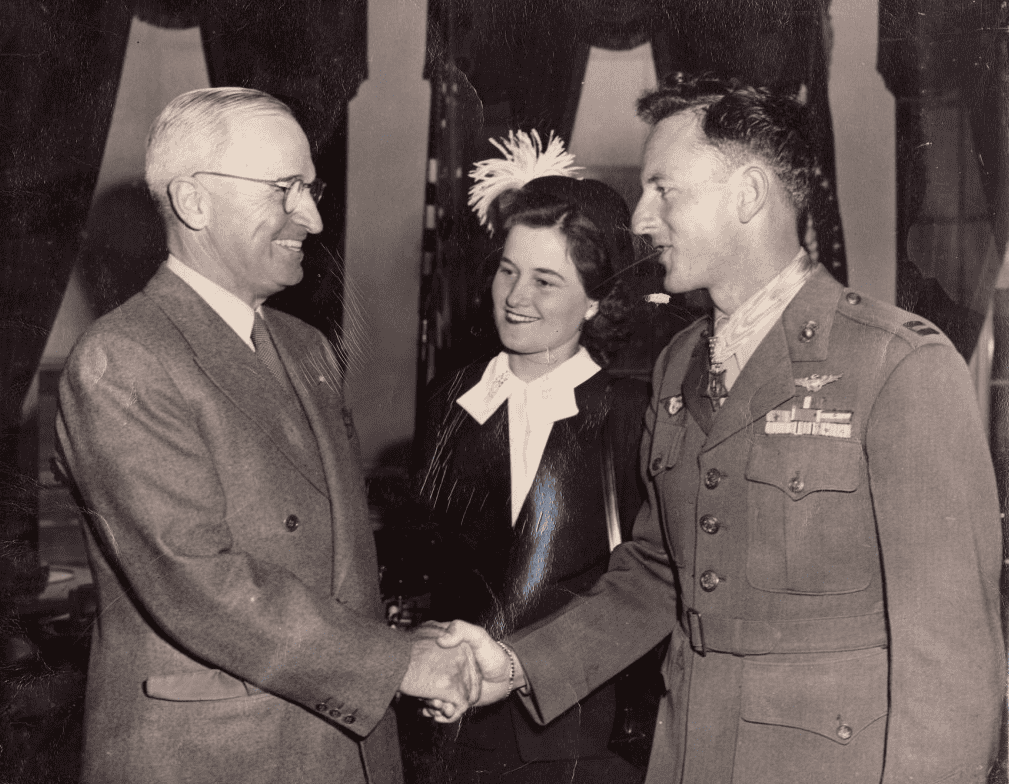
- Rank: Captain
- War during which medal was earned: World War II
- Military branch: U.S. Marine Corps Reserve
- Medal of honor recipients attributed to state: 24 — 23rd fewest
Capt. Jefferson Joseph DeBlanc was attached to the Marine Fighting Squadron 112. On Jan. 31, 1943, he took part in aerial operations against Japanese forces off Kolombangara Island. Deblanc successfully escorted dive bombers and disrupted enemy attacks. Despite a much larger Japanese force and sustaining severe damage to his aircraft, he shot down five enemy planes, including three Zeros. He was forced to bail out over enemy waters.
Maine: Gary Ivan Gordon

- Rank: Master Sergeant
- War during which medal was earned: Somalia (Operation Restore Hope)
- Military branch: U.S. Army
- Medal of honor recipients attributed to state: 66 — 13th most
Master Sgt. Gary I. Gordon was a U.S. Army sniper team leader during the 1993 Task Force Ranger mission in Mogadishu, Somalia. During the mission, he volunteered to protect critically wounded personnel at a crash site. He fought through enemy lines and established a perimeter. There he continued to defend his fellow soldiers until his ammunition was depleted and he was fatally wounded. The film Black Hawk Down tells the story of his actions.
Maryland: Patrick Mullen
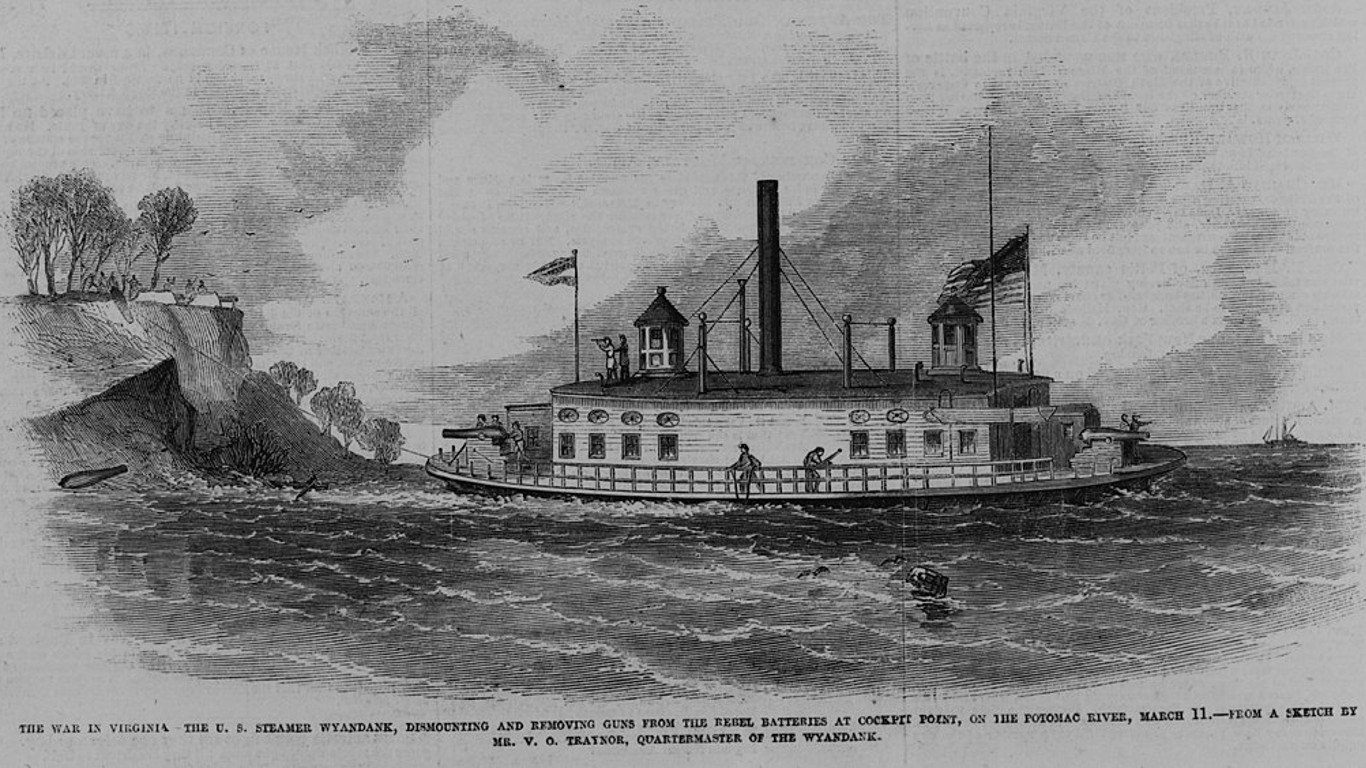
- Rank: Boatswain’s Mate
- War during which medal was earned: U.S. Civil War
- Military branch: U.S. Navy
- Medal of honor recipients attributed to state: 83 — 9th most
Another recipient of two Medals of Honor is Irish-born boatswain’s Mate Patrick Mullen. On March 17 1865 during the US Civil War, his howitzer fire dispersed enemy soldiers during a boating expedition. On May 1 he jumped into the water the rescue his fellow shipmate on the USS Don and thereby saved the drowning officer.
Massachusetts: William Harvey Carney
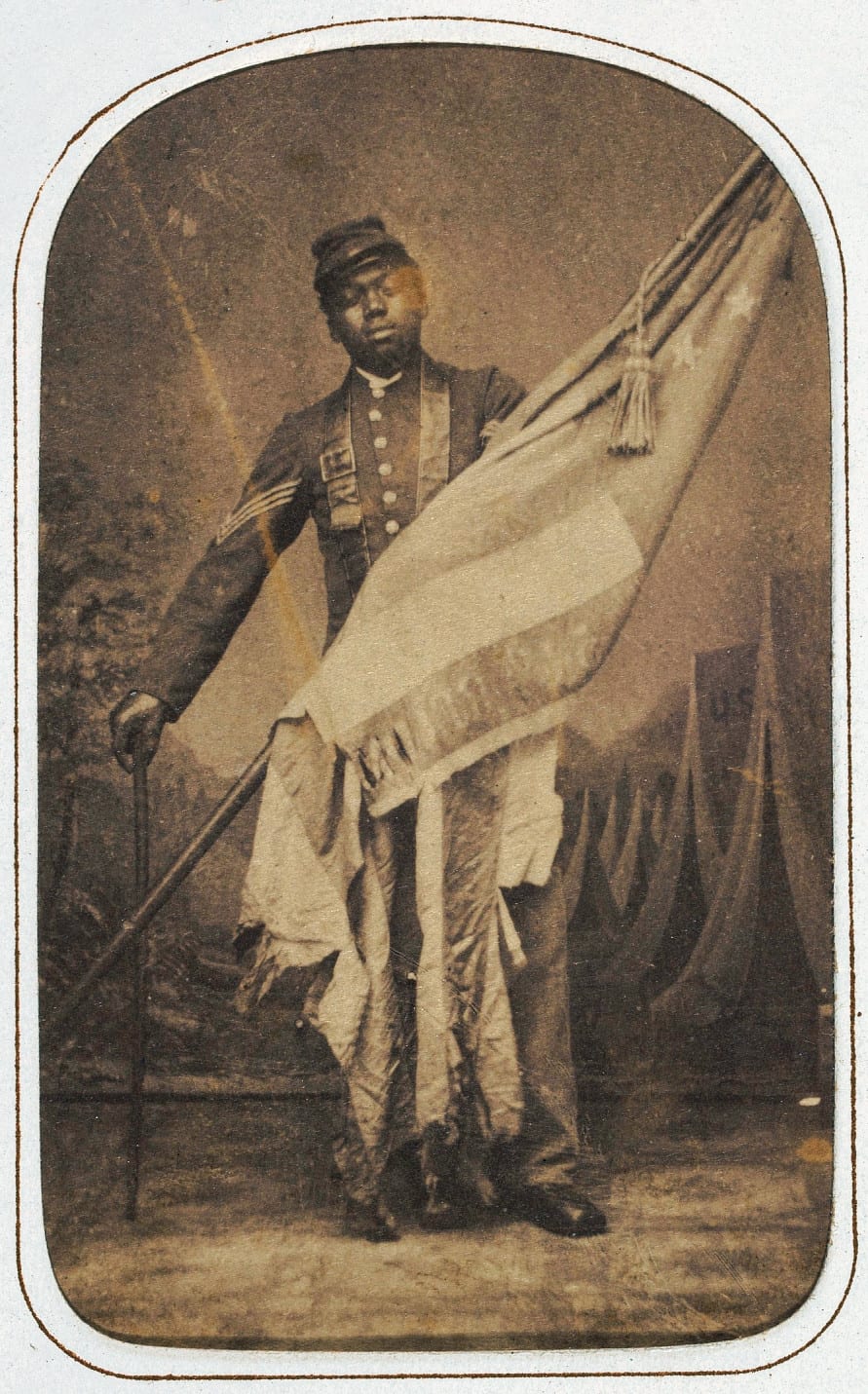
- Rank: Sergeant
- War during which medal was earned: U.S. Civil War
- Military branch: U.S. Army
- Medal of honor recipients attributed to state: 265 — 3rd most
Sgt. William Harvey Carney was the first black American to receive the Medal of Honor. He was enlisted in the Union Army’s 54th Massachusetts Infantry Regiment during the US Civil War. When the flag bearer fell in the assault on Fort Wagner, he took the flag. He held onto the flag throughout the conflict, despite sustaining injuries and the regiment’s retreat. The action of the Union Army’s 54th Massachusetts Infantry Regiment, one of the first Black American military units, was immortalized in the film “Glory”,
Michigan: Thomas Ward Custer
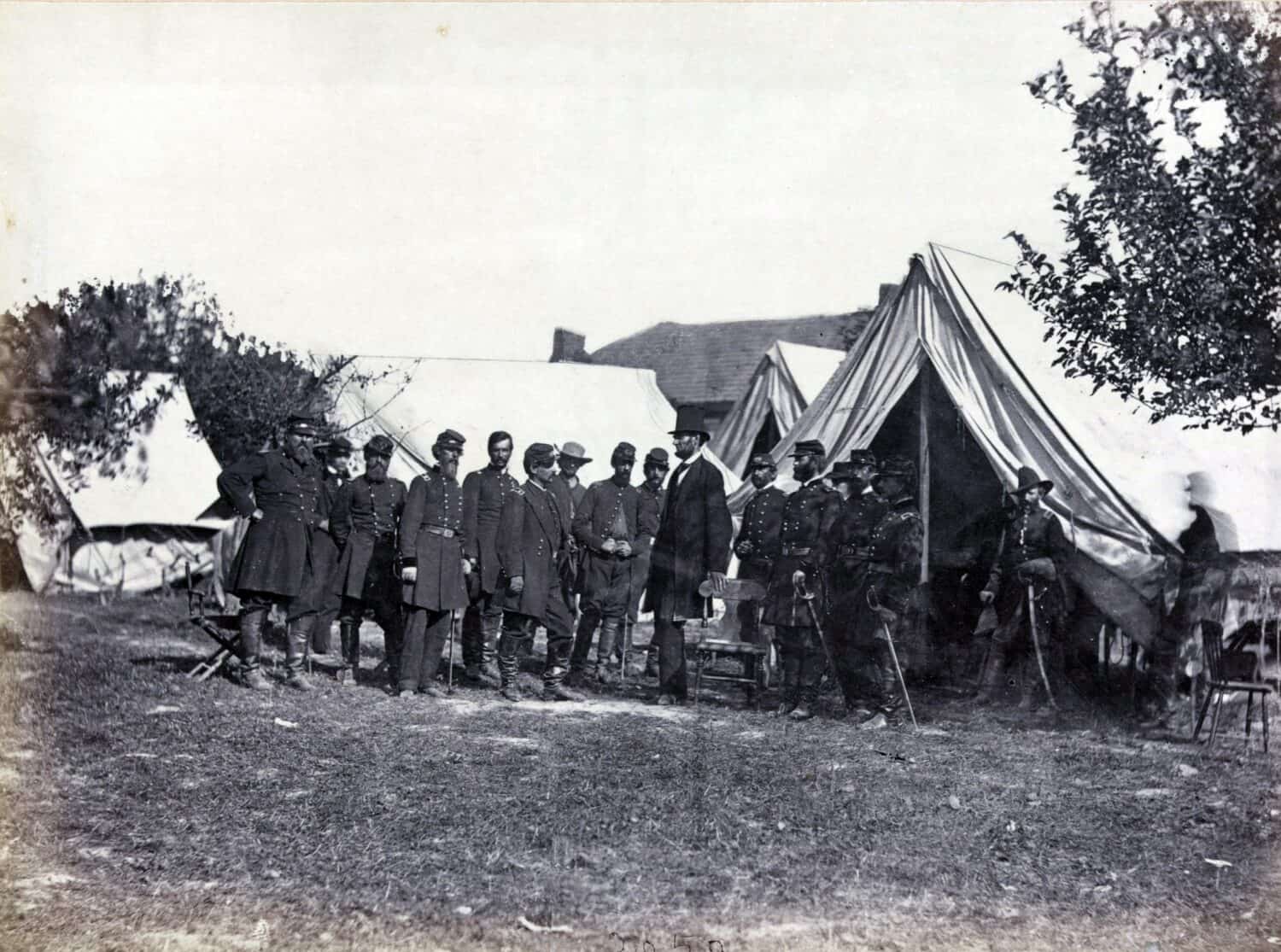
- Rank: Second Lieutenant
- War during which medal was earned: U.S. Civil War
- Military branch: U.S. Army
- Medal of honor recipients attributed to state: 109 — 7th most
2nd Lt. Thomas Ward Custer, a Civil War soldier, was the first to earn two Medals of Honor. His initial honor was for leading a successful cavalry charge at the Battle of Namozine Church, where he captured a Confederate flag and took 14 prisoners. Days later, at the Battle of Sailor’s Creek, he once more captured a Confederate flag after breaking a Confederate line. Despite being shot in the face, he managed to seize the flag and present it to his brother. Custer, along with his two brothers, died in the Battle of Little Bighorn in 1876.
Minnesota: Leo Keith Thorsness

- Rank: Major
- War during which medal was earned: Vietnam War
- Military branch: U.S. Air Force
- Medal of honor recipients attributed to state: 46 — 19th most
During a suppression mission over North Vietnam, Lt. Col. (then Maj.) Leo Keith Thorsness, piloting an F-105 aircraft, silenced two missile sites. His wingman was shot down, and while keeping sight of the crew’s parachutes, he destroyed a MIG-17. Despite low fuel, Thorsness returned to the scene, and faced four MIG-17s, damaging one and driving the rest away. He then landed at a forward operating base, allowing the low on fuel aircraft fuel to refuel safely.
Mississippi: Van Thomas Barfoot

- Rank: Technical Sergeant
- War during which medal was earned: World War II
- Military branch: U.S. Army
- Medal of honor recipients attributed to state: 18 — 15th fewest
In Carano, Italy, on May 23, 1944, 2nd Lt. (then Tech. Sgt.) Van Thomas Barfoot single-handedly took out two machine gun nests with grenades and his Thompson submachine gun and captured 17 prisoners. He then organized a counterattack, firing on three tanks with a bazooka from 75 yards, disabling one. Despite extreme fatigue, he then helped carry two wounded comrades 1,700 yards to safety.
Missouri: Willy F James Jr.
- Rank: Private First Class
- War during which medal was earned: World War II
- Military branch: U.S. Army
- Medal of honor recipients attributed to state: 78 — 10th most
On April 7, 1945, during an assault in Lippoldsberg, Germany, Pvt. 1st Class Willy F. James Jr. was in the forward position on a scouting mission. He exposed himself to intense enemy fire to observe and report on enemy positions, making his way over 200 yards of open terrain. Using the important information he acquired, he volunteered to lead a squad assault on a key building. Later, James Jr. again risked his life to aid his fallen platoon leader and unfortunately was fatally shot in the process.
Montana: Leo J Powers

- Rank: Private First Class
- War during which medal was earned: World War II
- Military branch: U.S. Army
- Medal of honor recipients attributed to state: 8 — 7th fewest
During WWII Pfc. Leo J Powers’ company had to capture Hill 175 near Cassino, Italy. About 50 of the enemy defended the location with machine guns and mortars. Powers’ company suffered eight casualties and its advance was halted. Al alone Powers neutralized three enemy pillboxes using hand grenades. This allowed his company to advance. What he did caused several enemy soldiers to be captured and helped a lot to get his regiment into the city of Cassino.
Nebraska: Charles Chris Hagemeister

- Rank: Specialist Fourth Class
- War during which medal was earned: Vietnam War
- Military branch: U.S. Army
- Medal of honor recipients attributed to state: 20 — 16th fewest
During the Vietnam War Spc. 4th Class Charles Chris Hagemeister’s platoon was ambushed. He ran through enemy fire in order to provide medical aid to his fellow soldiers. In the process, he single-handedly neutralized a sniper and took out an enemy machine gun. While under continuous enemy fire, he got help and evacuated the wounded.
Nevada: Bruce Avery Van Voorhis
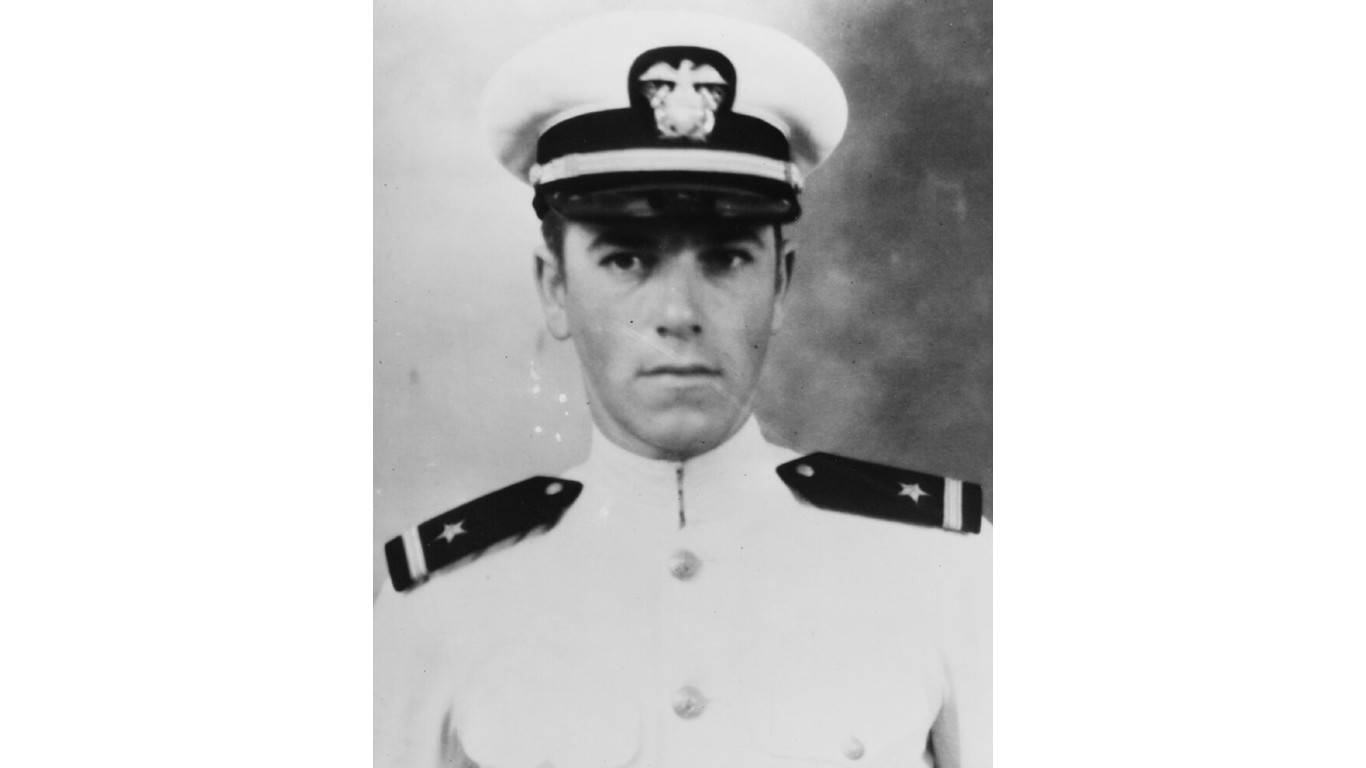
- Rank: Lieutenant Commander
- War during which medal was earned: World War II
- Military branch: U.S. Navy
- Medal of honor recipients attributed to state: 2 — 2nd fewest
Lt. Cmdr. Bruce Avery Van Voorhis, Bombing Squadron 102’s leader distinguished himself during the Solomon Islands battle. He flew 700 miles without fighter escort to destroy key enemy installations and aircraft. He decided not to return, but to continue attacking enemy targets on his own. He made six ground-level bombing runs. He destroyed a radio station, installations, anti-aircraft guns, and crews. Unfortunately, his plane got caught in his own bomb blast, crashed and he lost his life.
New Hampshire: Chris Carr
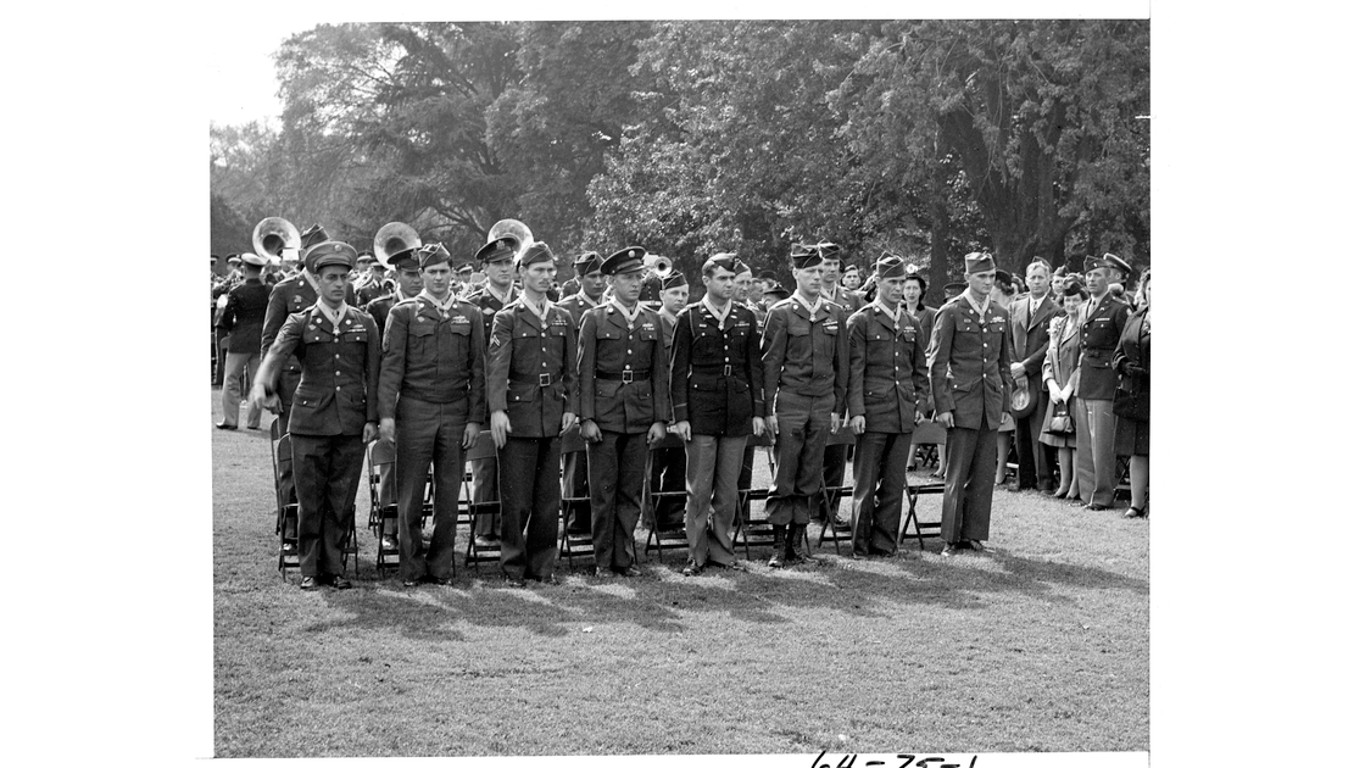
- Rank: Sergeant
- War during which medal was earned: World War II
- Military branch: U.S. Army
- Medal of honor recipients attributed to state: 36 — 22nd most
During the approach toward Casoni di Romagna Sgt. Chris Carr led a unit of Company L. They encountered resistance and he decided to go on alone. At the first enemy position, he captured eight soldiers and captured one at the second position. He also neutralized a third position where all four defenders surrendered. He then approached a high ground with two machine gun nests, destroying the first and causing the immediate surrender of the second. All in all, he captured five positions, shot eight enemy soldiers down, and captured 22 prisoners.
New Jersey: John “Manila John” Basilone
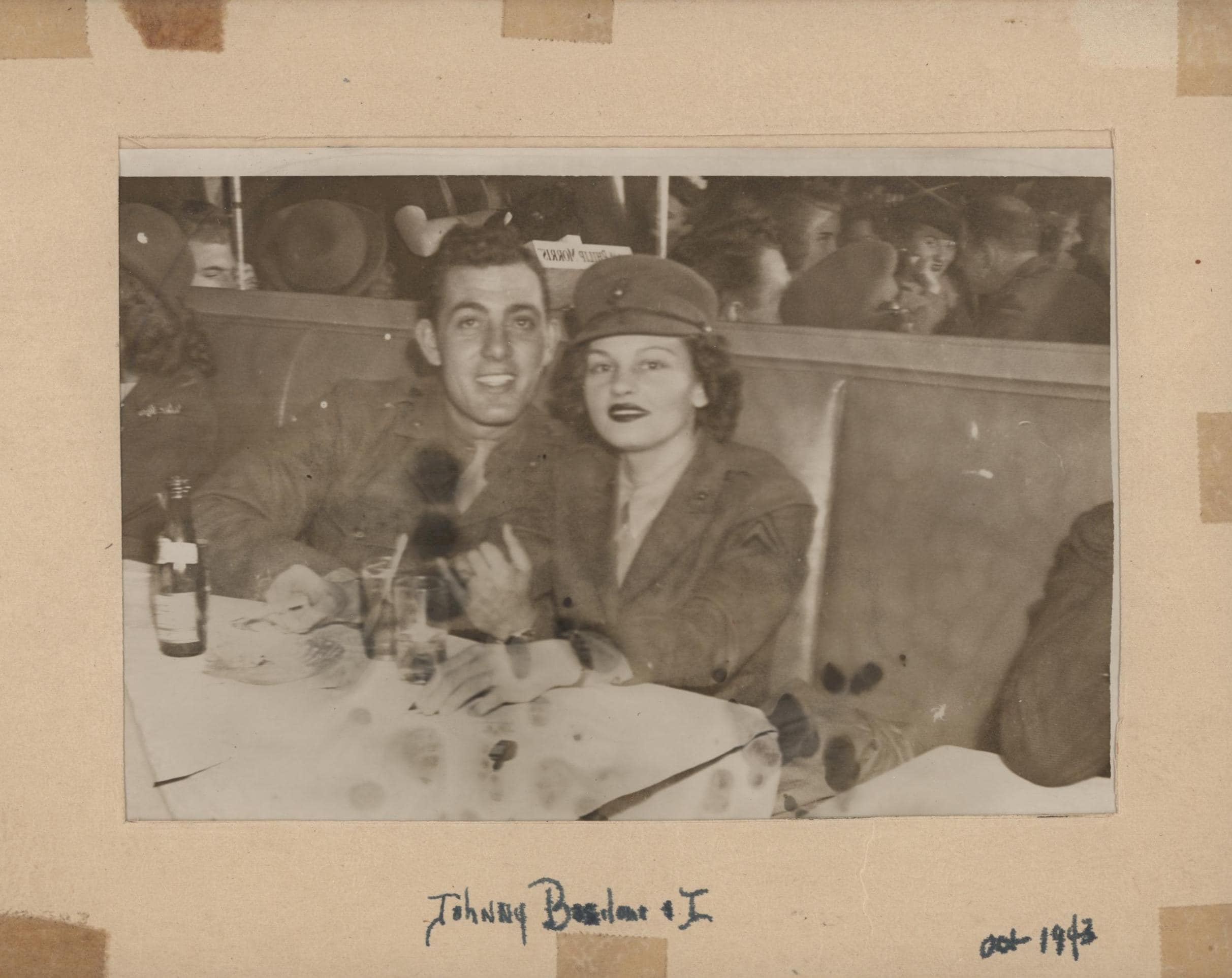
- Rank: Sergeant
- War during which medal was earned: World War II
- Military branch: U.S. Marine Corps
- Medal of honor recipients attributed to state: 94 — 8th most
The HBO series “The Pacific” tells the story of how Sgt. John Basilone, AKA “Manila John,” got his medal during the 1942 Guadalcanal campaign. He repelled an overwhelming Japanese assault by leading two sections of heavy machine guns. He maneuvered through enemy lines to retrieve vital machine gun ammo when ammunition ran low. It was because of his actions that an entire Japanese regiment was defeated. Basilone reenlisted and tragically lost his life on the first day of the Iwo Jima invasion.
New Mexico: Hiroshi Miyamura
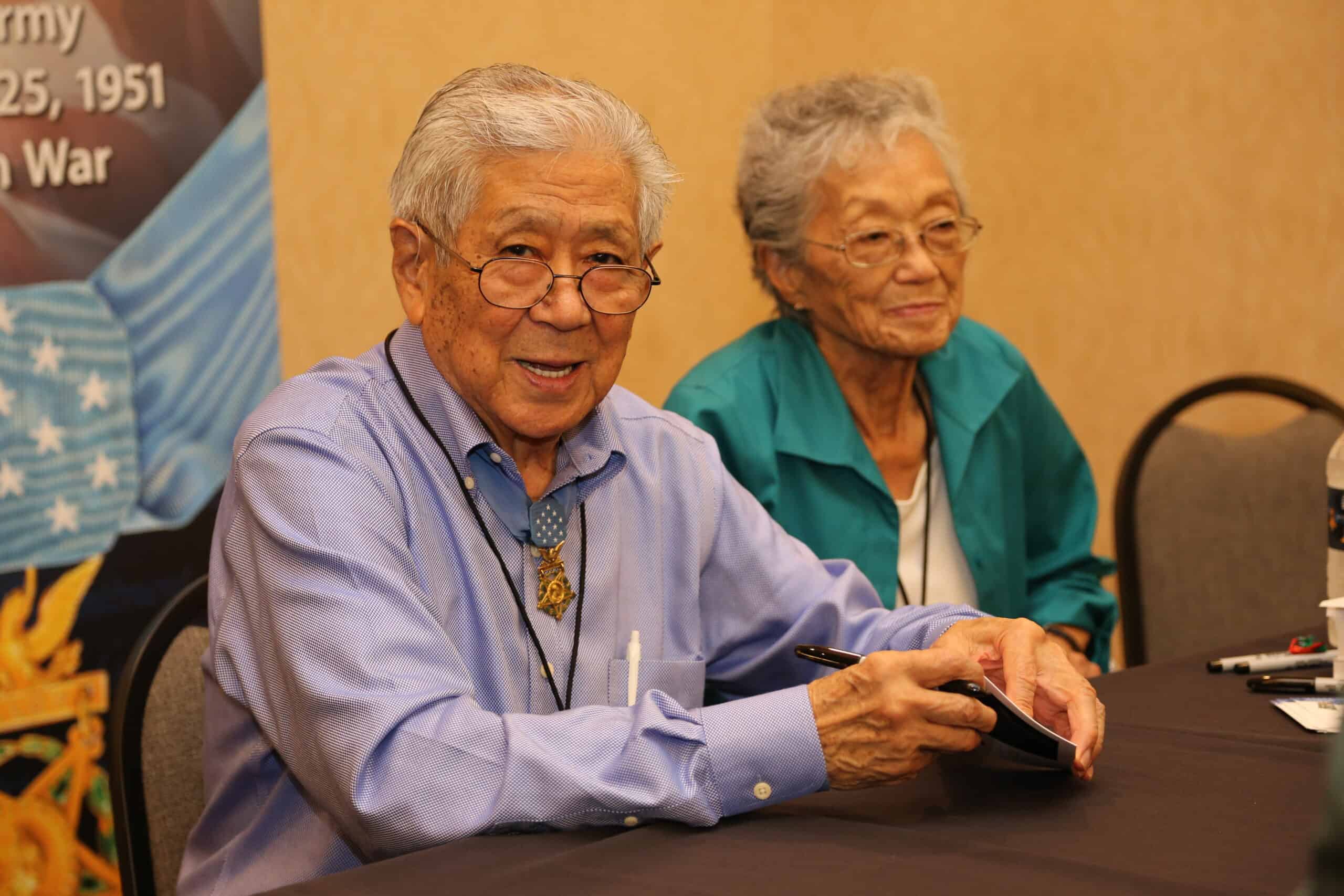
- Rank: Corporal
- War during which medal was earned: Korean War
- Military branch: U.S. Army
- Medal of honor recipients attributed to state: 9 — 8th fewest
During the Korean War Cpl. Hiroshi Miyamura, of Company H, fought the enemy at short range. His ammunition was almost used up and he had severe injuries, but he prevailed, thereby ensuring his squad’s safe withdrawal. After that, he used a second gun to, alone, hold the position against a large number of enemy soldiers. In the course of the fight, he eliminated more than 50 enemy soldiers.
New York: William Bradford Turner
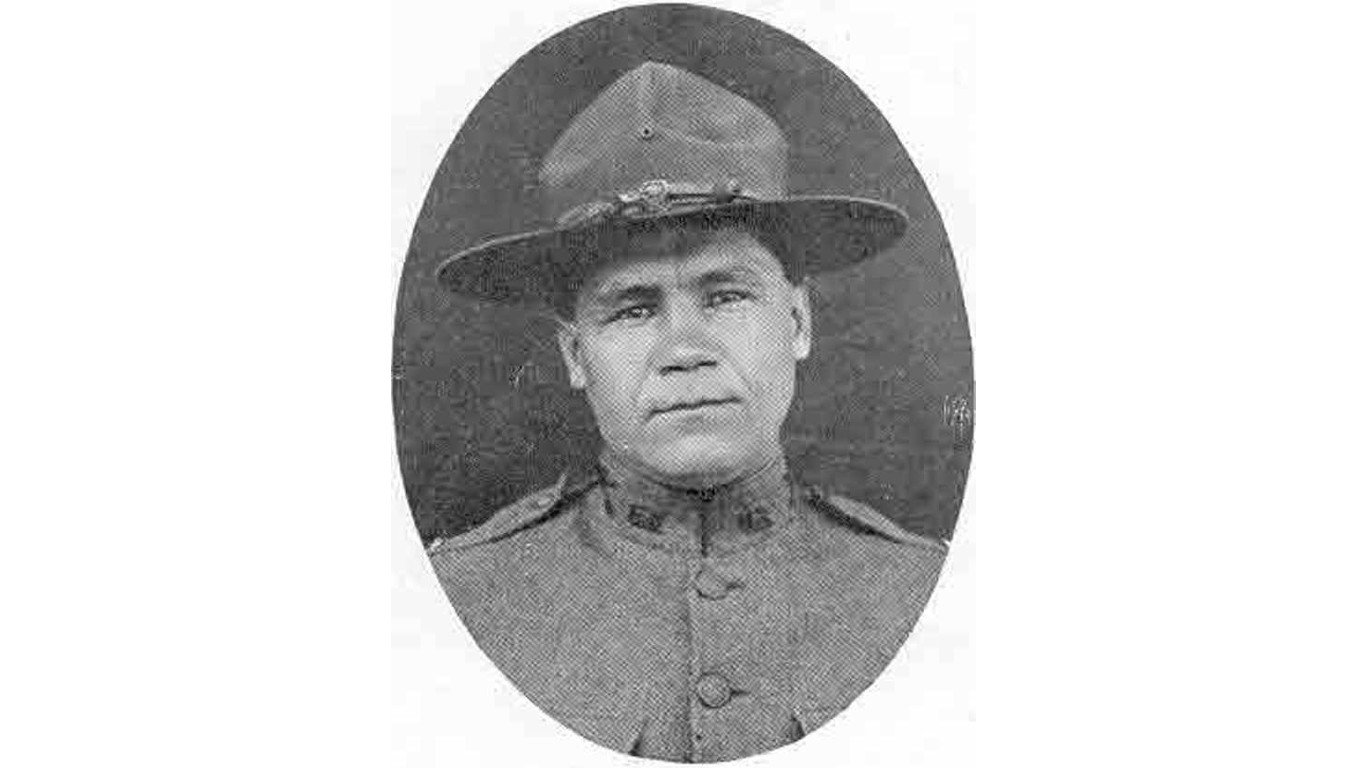
- Rank: First Lieutenant
- War during which medal was earned: World War I
- Military branch: U.S. Army
- Medal of honor recipients attributed to state: 672 — the most
First Lt. William Bradford Turner led a small detachment that was separated from the main company. While doing this he alone took out an enemy machine gun crew using his pistol. He and his group then advanced to a second position that they also took out. He was wounded three times, but still led his men across three enemy trenches. When he ran out of pistol ammunition, he used a fallen soldier’s rifle. With this, he eliminated another machine gun crew. When they reached the fourth trench, they captured it and held it until they were eventually surrounded and Turner lost his life.
North Carolina: Bryant Homer Womack
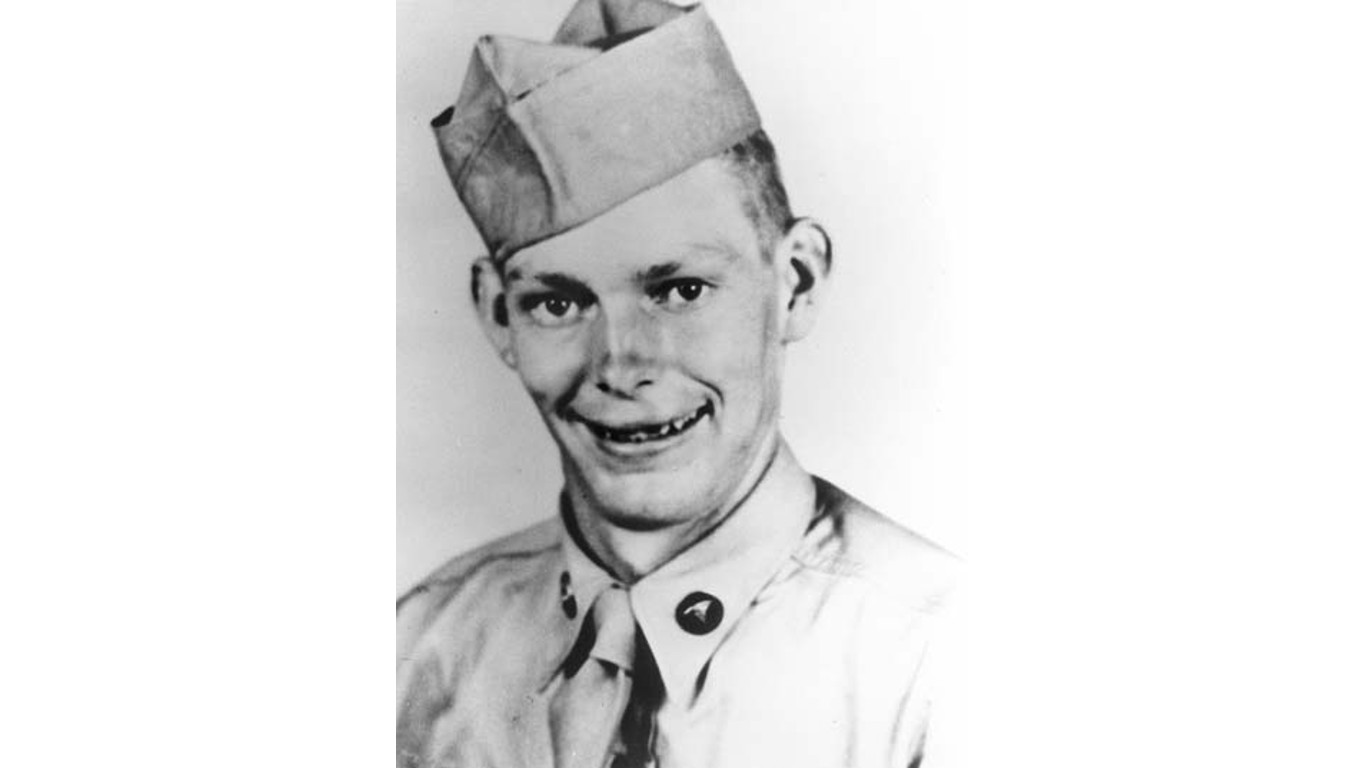
- Rank: Private
- War during which medal was earned: Korean War
- Military branch: U.S. Army
- Medal of honor recipients attributed to state: 20 — 17th fewest
During a night patrol when a larger enemy force attacked, Pfc. Bryant Homer Womack was the sole medical aid. He had serious injuries from the attack, but he helped his fellow soldiers first. He was also struck by an enemy mortar and lost his right arm. Despite this, he continued instructing others in first-aid, refusing help for himself. He was the last to withdraw, collapsing from blood loss and losing his life while being carried by his comrades.
North Dakota: Woodrow Wilson Keeble
- Rank: Master Sergeant
- War during which medal was earned: Korean War
- Military branch: U.S. Army
- Medal of honor recipients attributed to state: 17 — 14th fewest
During an attack on Hill 765 near Sangsan-ni, Korea, on Oct. 20, 1951, Master Sgt. Woodrow W. Keeble was acting platoon leader in Company G, 19th Infantry. Keeble individually neutralized three enemy emplacements using grenades while facing heavy enemy fire from fortified positions. He kept on advancing and also provided accurate fire against nearby trenches, despite incoming enemy fire and grenades. Doing this he helped Company G to advance and capture its objective.
Ohio: Charles Joseph Berry
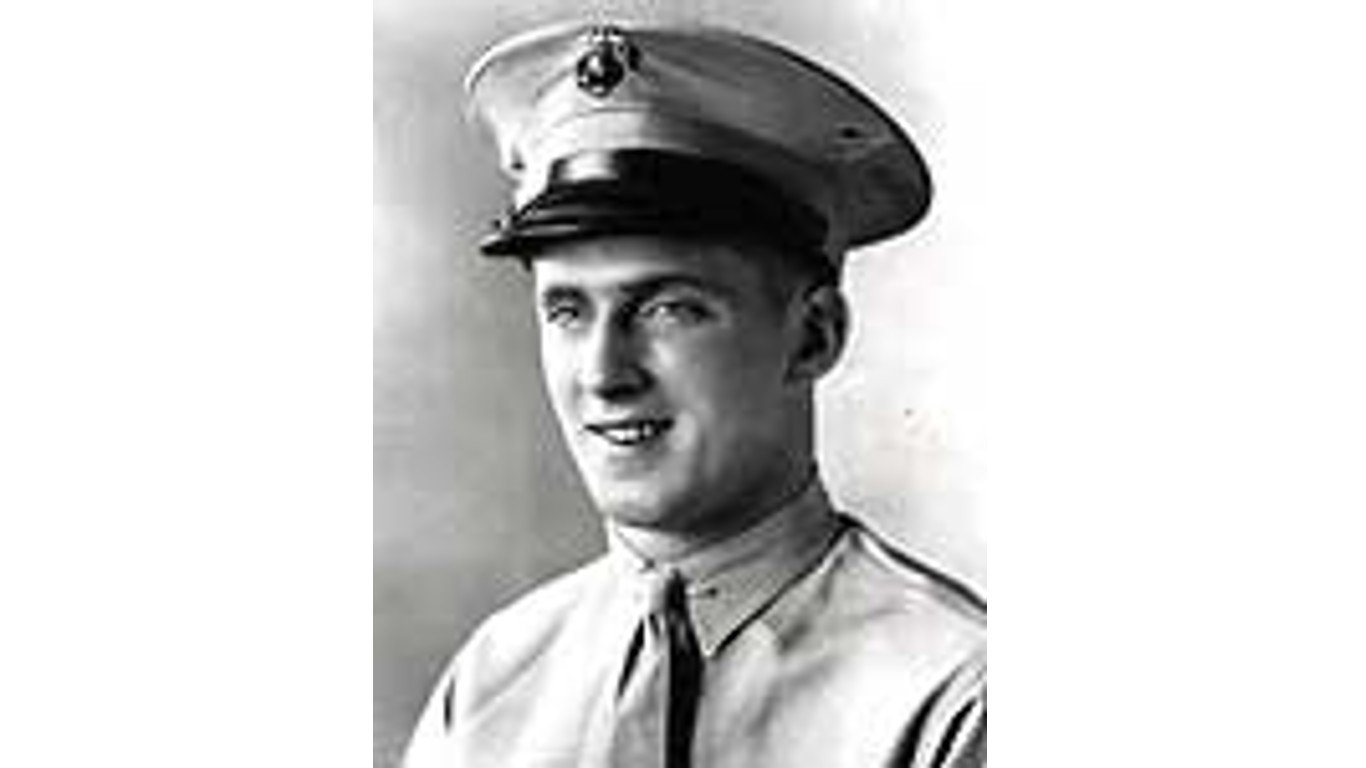
- Rank: Corporal
- War during which medal was earned: World War II
- Military branch: U.S. Marine Corps
- Medal of honor recipients attributed to state: 254 — 4th most
Cpl. Charles Joseph Berry served with the 1st Battalion, 26th Marines, 5th Marine Division during the Iwo Jima invasion, on March 3, 1945. The Japanese attacked the frontlines at midnight. During a hand-grenade exchange, an enemy grenade landed in his foxhole. Berry absorbed the explosion by diving onto the grenade. This protected his fellow marines but caused severe injuries to himself.
Oklahoma: Bennie G Adkins
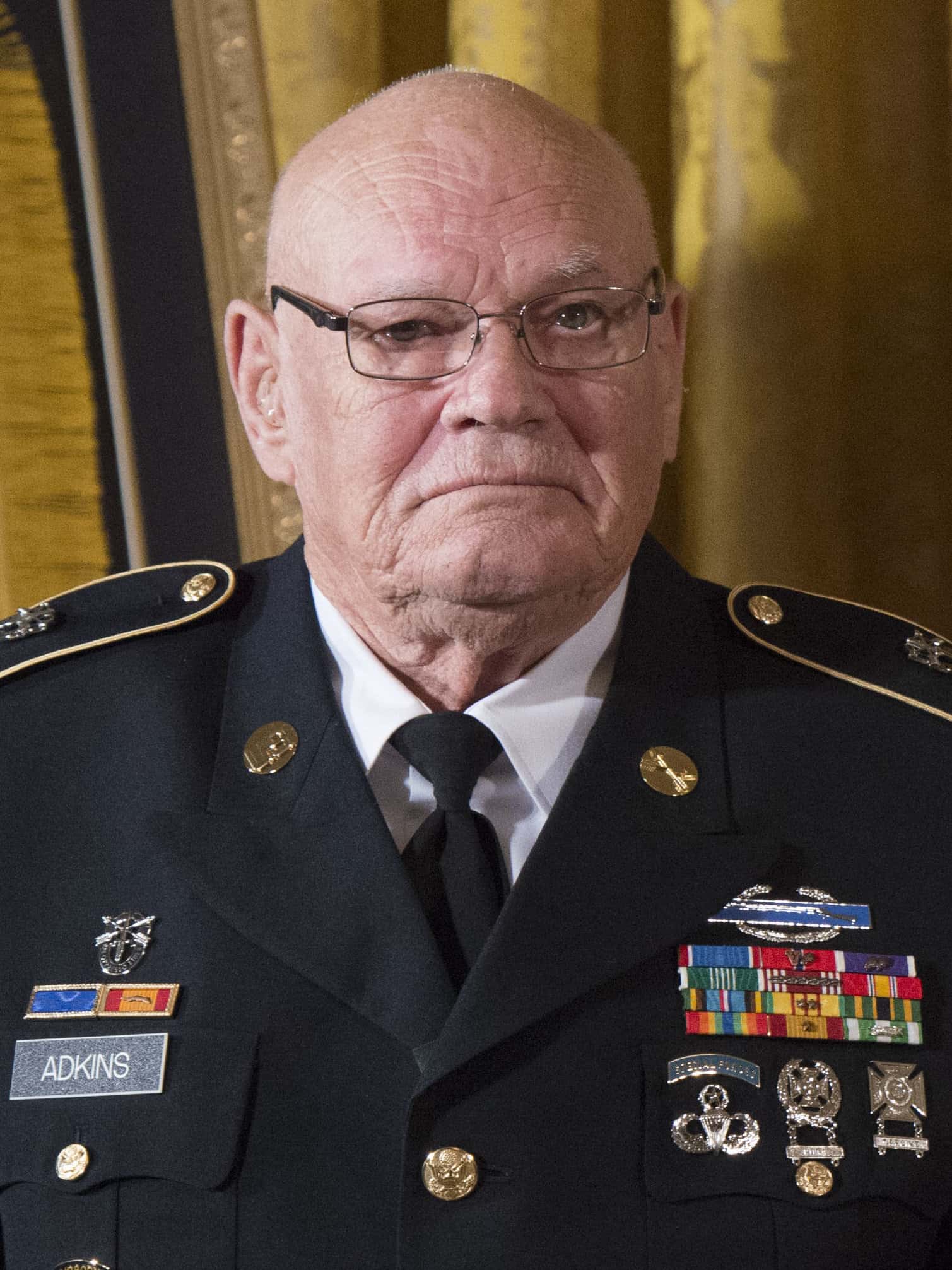
- Rank: Sergeant First Class
- War during which medal was earned: Vietnam War
- Military branch: U.S. Army
- Medal of honor recipients attributed to state: 22 — 19th fewest
Sgt. 1st Class Bennie G. Adkins operated a mortar position during combat operations at Camp A Shau, Vietnam, from March 9 to 12, 1966. He was wounded 18 times, but in spite of that, he aided wounded soldiers, retrieved supplies, and evaded enemy forces. They estimated that he eliminated between 135 and 175 enemy combatants. He did this by using machine guns, recoilless rifles, small arms, mortars, and hand grenades.
Oregon: Arthur Junior Jackson
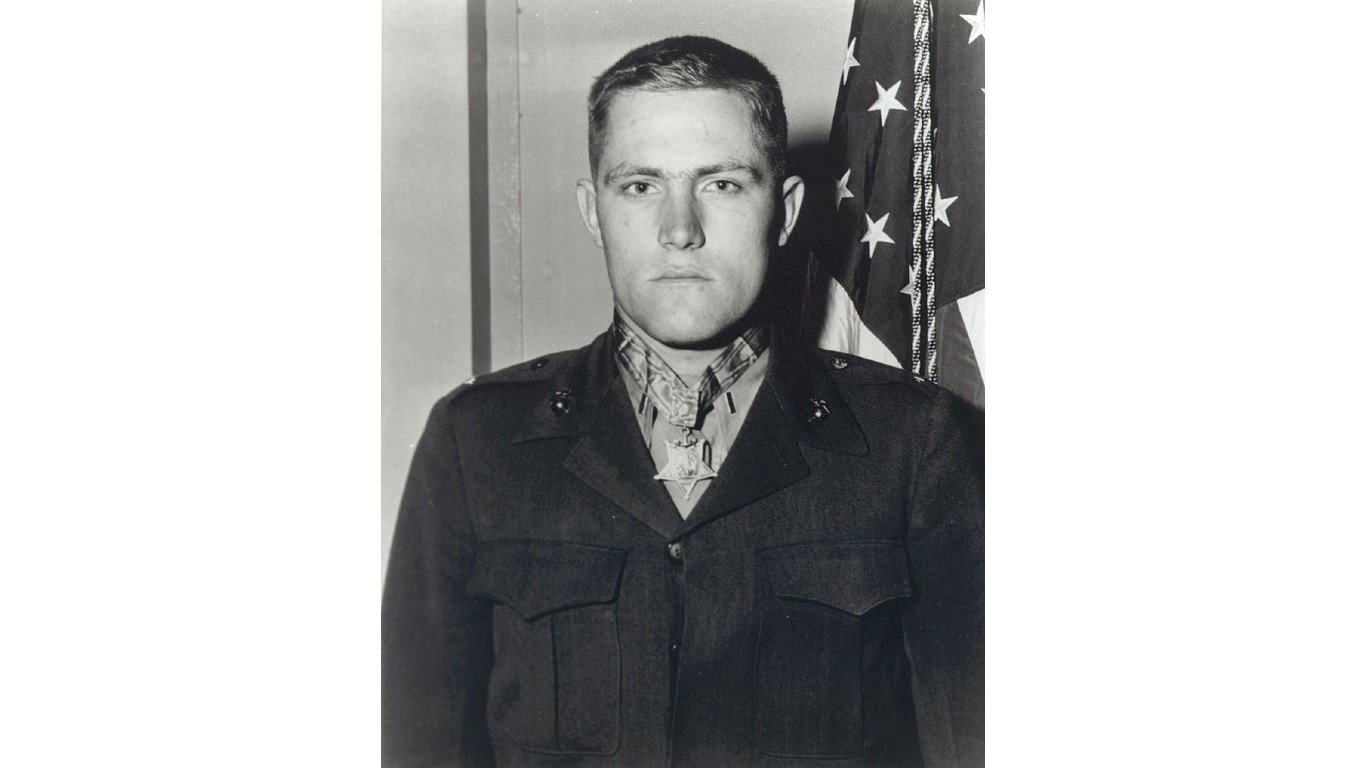
- Rank: Private First Class
- War during which medal was earned: World War II
- Military branch: U.S. Marine Corps
- Medal of honor recipients attributed to state: 13 — 12th fewest
Pfc. Arthur Junior Jackson served with the 3rd Battalion, 7th Marines, 1st Marine Division. On Sept. 18, 1944, they fought the Japanese on Pelelui. During this, he advanced ahead of American lines and then blew up a large pillbox housing about 35 Japanese soldiers using explosives and grenades. He then took out two smaller positions nearby, while under continuous fire. All in all, he took out 12 pillboxes and 50 enemy soldiers.
Pennsylvania: Robert Earl Laws
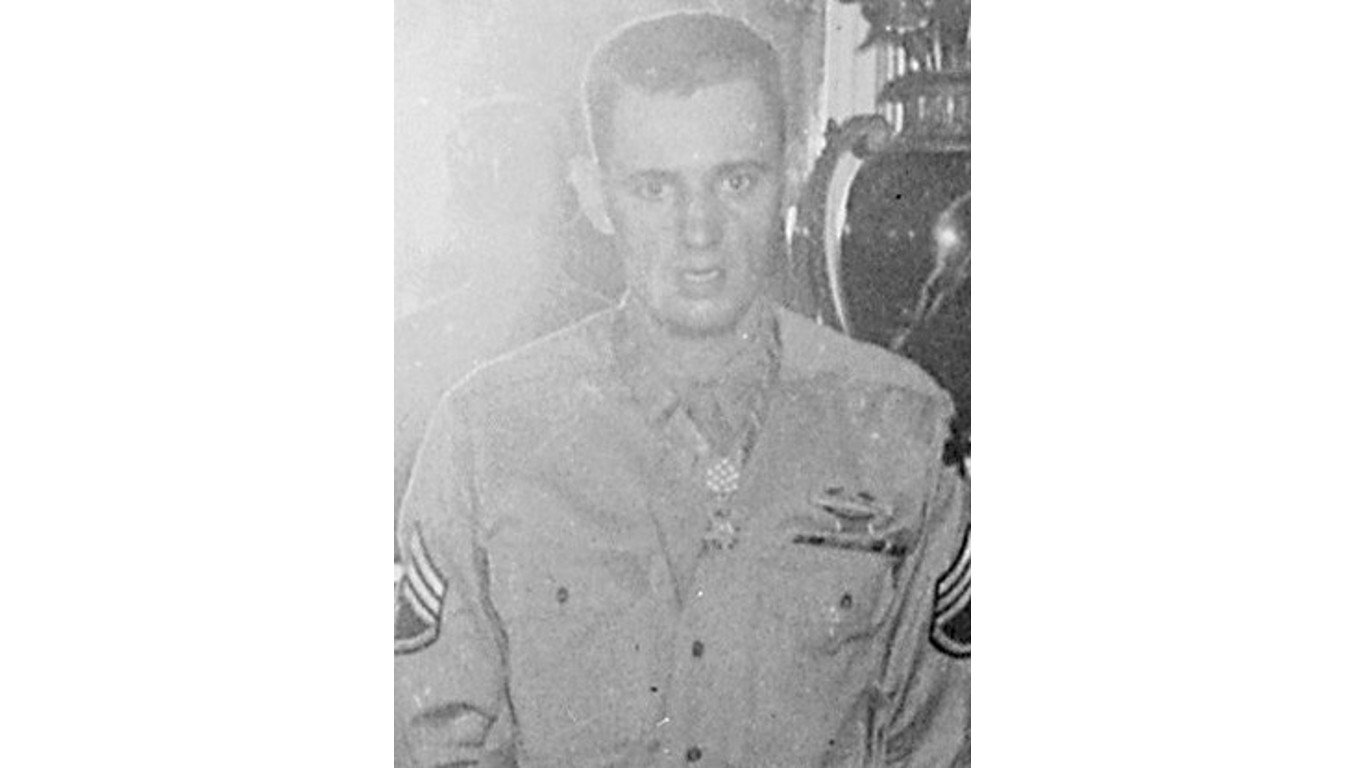
- Rank: Staff Sergeant
- War during which medal was earned: World War II
- Military branch: U.S. Army
- Medal of honor recipients attributed to state: 380 — 2nd most
During WWII Staff Sgt. Robert Earl Laws was the leader of an assault squad from Company G that attacked well-armed Japanese infantry on a hill. Laws reached and disabled an enemy pillbox with grenades, despite a narrow 70-yard ridge and enemy fire. He sustained injuries from enemy grenades and TNT, but carried on to lead an attack against enemy riflemen. He sustained a gash to his head when in a physical altercation with an enemy soldier. His squad completed the mission, while he was given first aid and evacuated.
Rhode Island: David Bernard Champagne
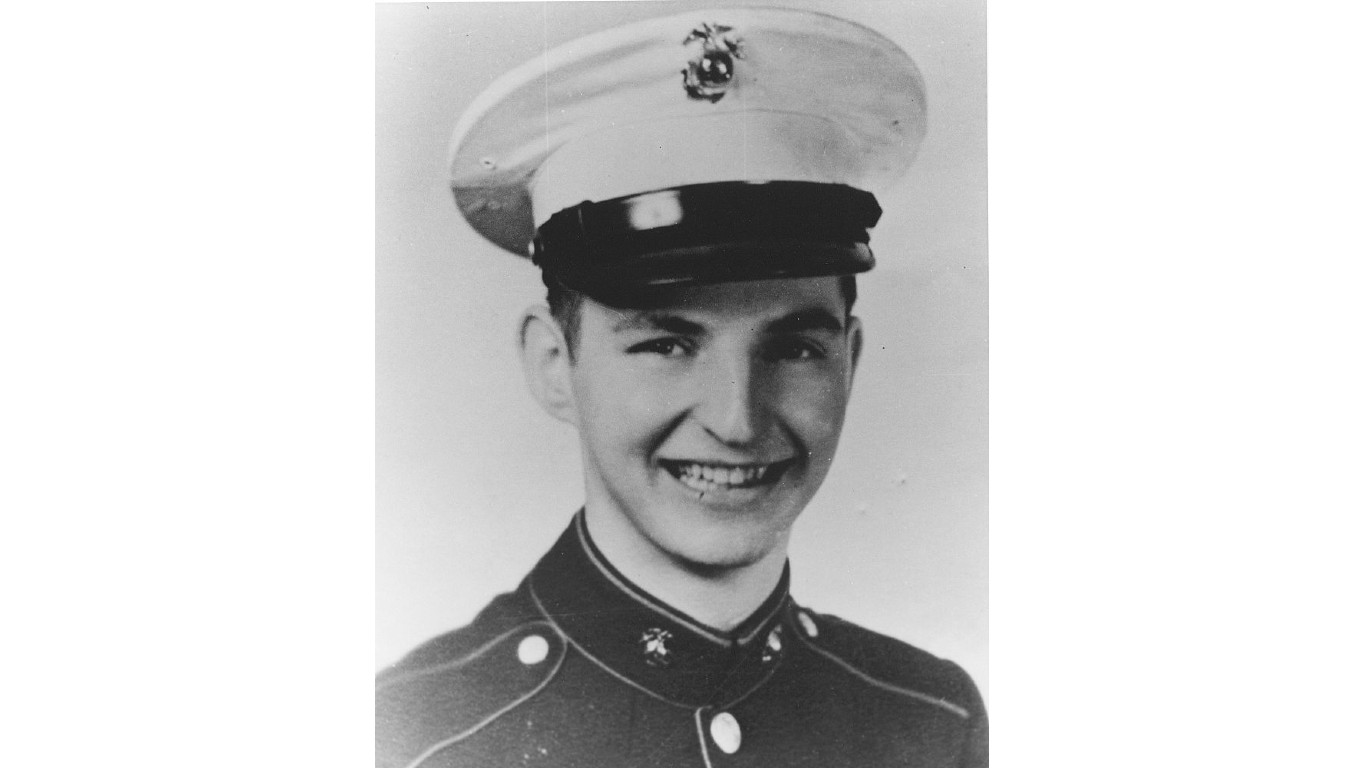
- Rank: Corporal
- War during which medal was earned: Korean War
- Military branch: U.S. Marine Corps
- Medal of honor recipients attributed to state: 31 — 25th fewest
During the Korean War, Cpl. David Bernard Champagne acted as a fire team leader for Company A, while they advanced against a heavily defended hill. He was injured but remained with his team. He lost his hand when he intercepted a hostile grenade. He was also shot from the trench by the grenade. He then suffered fatal wounds from enemy mortar fire. His actions likely saved several marines.
South Carolina: William Kyle Carpenter
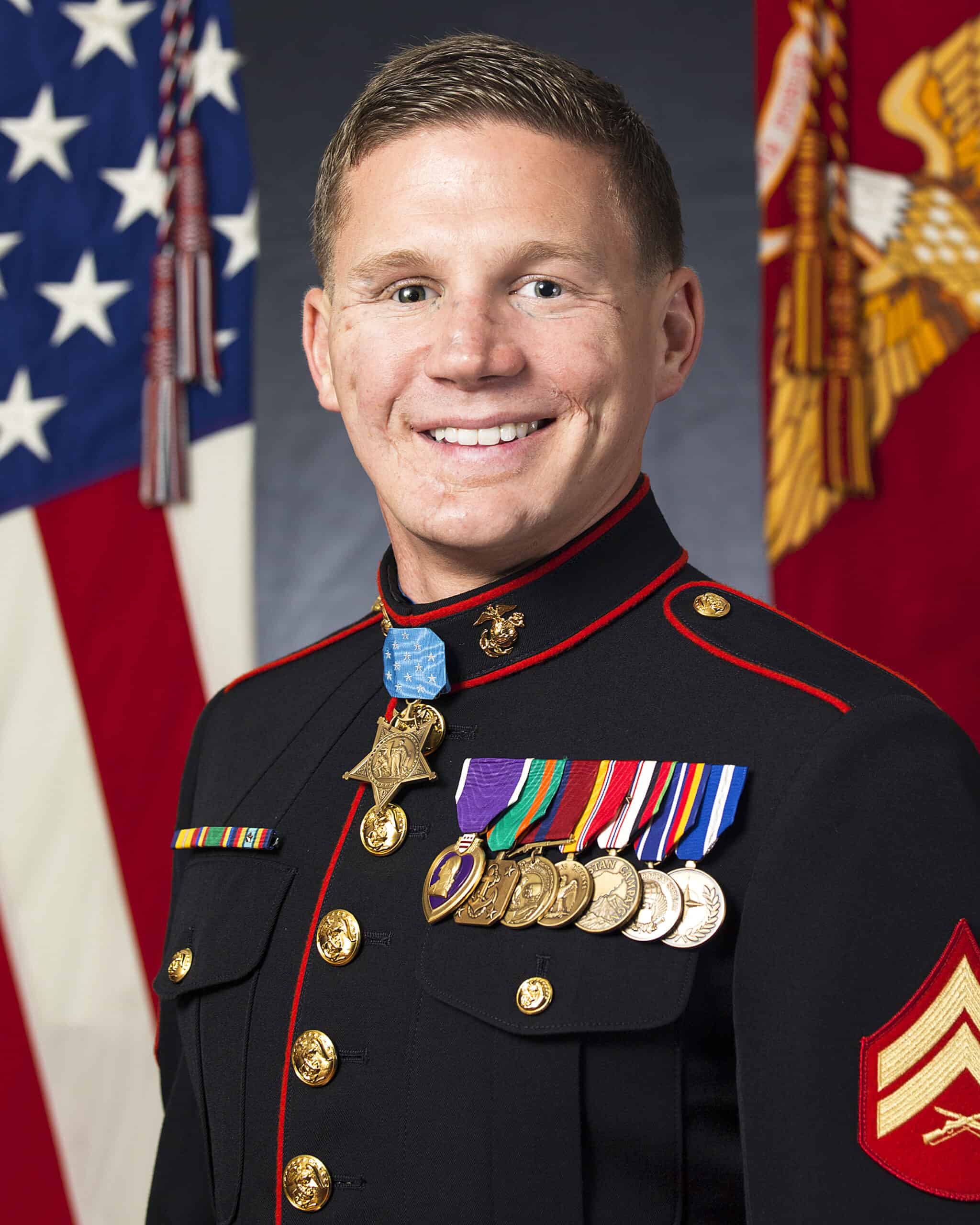
- Rank: Lance Corporal
- War during which medal was earned: War On Terrorism (Afghanistan)
- Military branch: U.S. Marine Corps
- Medal of honor recipients attributed to state: 32 — 24th most
Lance Cpl. William Kyle Carpenter was an automatic rifleman with Company F, 2d Battalion, 9th Marines. They were stationed in Helmand Province, Afghanistan during Operation Enduring Freedom in 2010. His platoon was a coalition force that included two Marine squads and an Afghan National Army squad. They had established Patrol Base Dakota in the Marjah District. When the enemy attacked, a grenade landed in Carpenter’s sandbagged position. He prevented injury to a fellow marine by moving towards the grenade, becoming severely injured himself.
South Dakota: Arlo Laverne Olson

- Rank: Captain
- War during which medal was earned: World War II
- Military branch: U.S. Army
- Medal of honor recipients attributed to state: 3 — 3rd fewest
Capt. Arlo Laverne Olson led a 30-mile advance through enemy territory on Oct. 13, 1943. Undeterred by point-blank gunfire, he navigated a raging river, neutralized enemy positions, and led his company to the opposite bank. Over 13 days, he spearheaded combat patrols, maintained constant contact with the enemy, and led an audacious attack on a fortified position. Despite being mortally wounded, he ensured his men were strategically positioned before accepting medical aid.
Tennessee: Alvin Cullum York
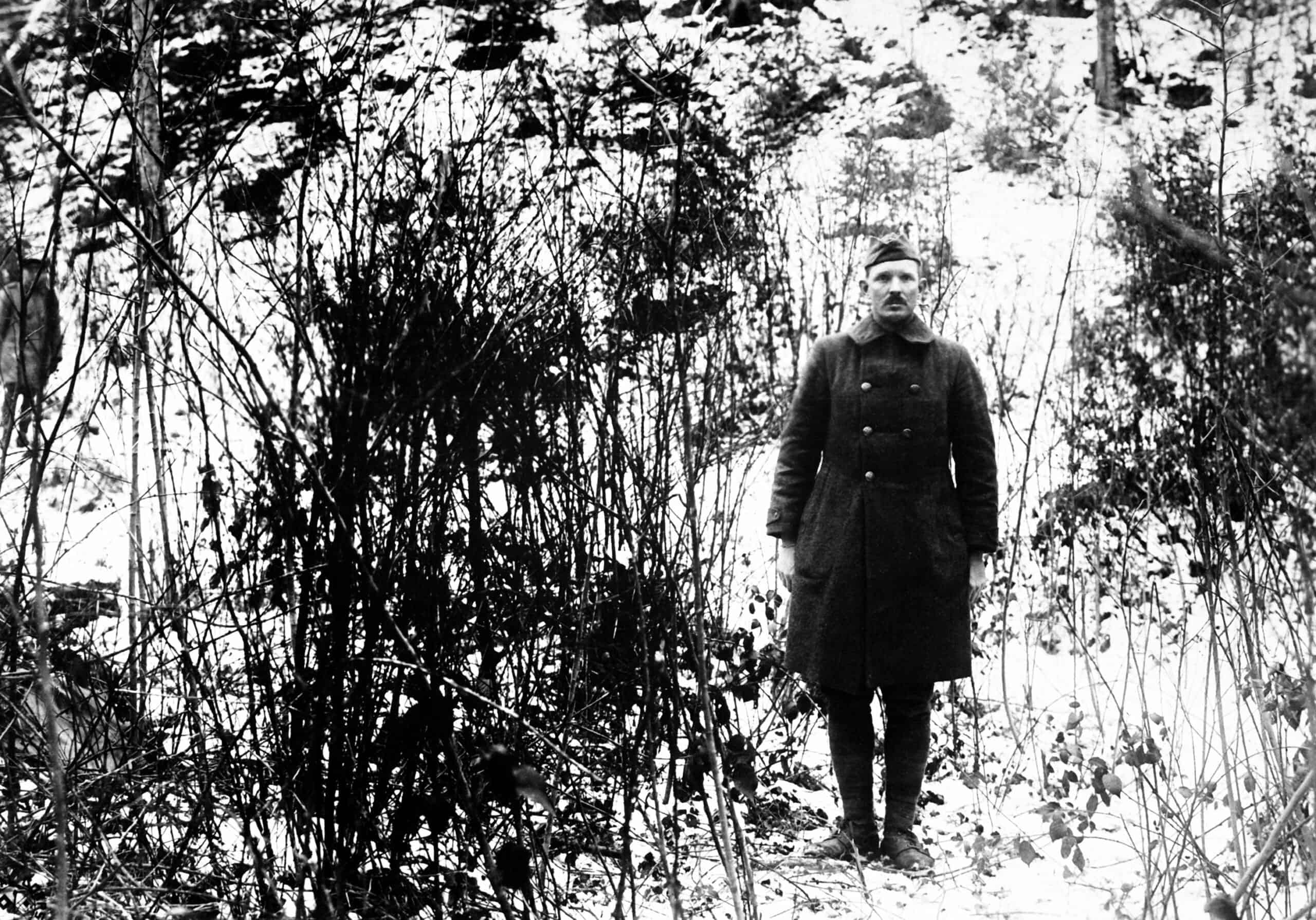
- Rank: Corporal
- War during which medal was earned: World War I
- Military branch: U.S. Army
- Medal of honor recipients attributed to state: 32 — 23rd most
Before his military service, Sgt. Alvin York was known in his hometown of Pall Mall, Tennessee, for his skills as a marksman, honed through hunting to support his family. Despite initial reservations due to his religious beliefs, he served in the U.S. Army during WWI and was instrumental in capturing 132 German soldiers in October 1918. At one point, he faced and took down a group of five Germans and was left unscathed. After the war, York used his fame and funds from a movie about his life to educate youth in his home community.
Texas: Roy Perez Benavidez
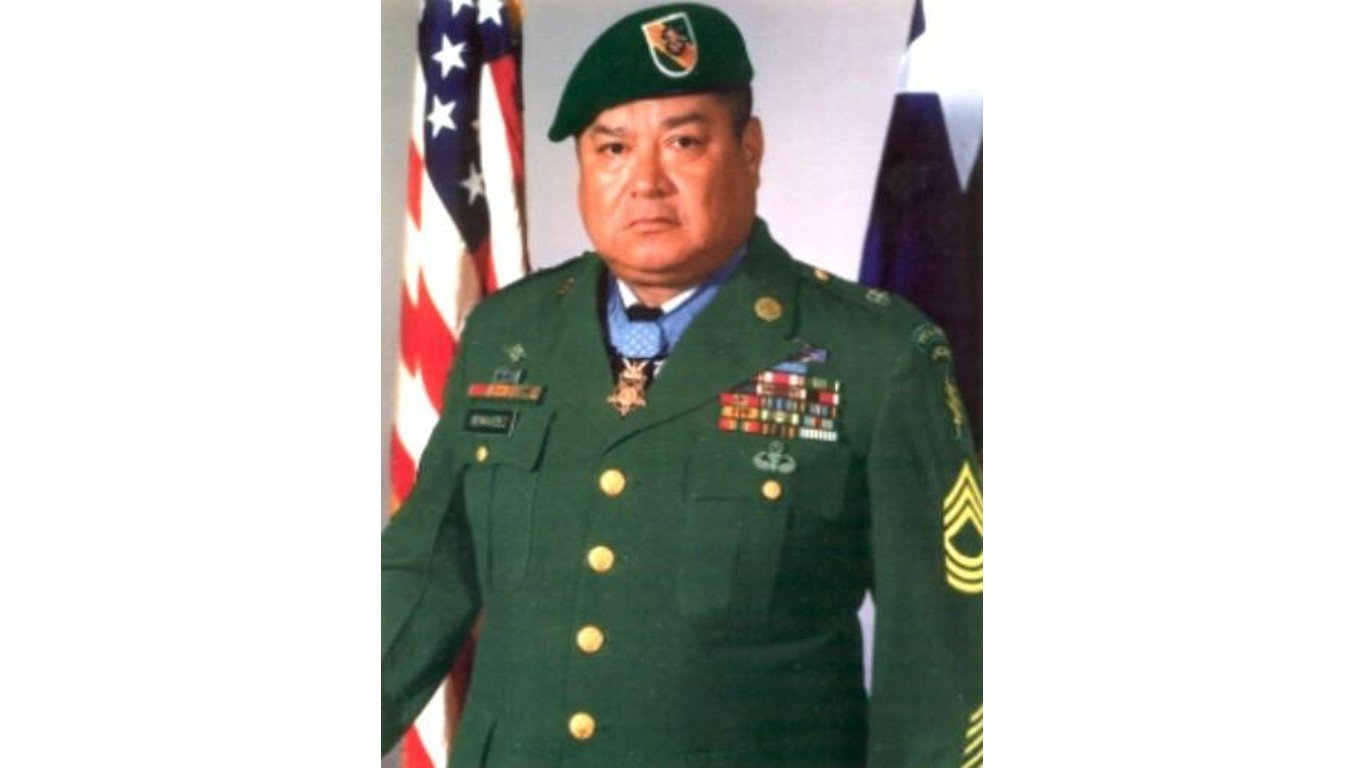
- Rank: Staff Sergeant
- War during which medal was earned: Vietnam War
- Military branch: U.S. Army
- Medal of honor recipients attributed to state: 76 — 11th most
On May 2, 1968, while Staff Sgt. Roy P. Benavidez was in Loc Ninh, Vietnam, a 12-man special forces team requested extraction after meeting heavy resistance, but the helicopters also met heavy fire and returned to base. Benavidez boarded a returning aircraft to assist in the extraction. Despite being wounded repeatedly, he facilitated the extraction of the team, secured classified documents, provided medical aid, and coordinated air strikes. His actions resulted in the safe return of eight men.
Utah: George Taro “Joe” Sakato
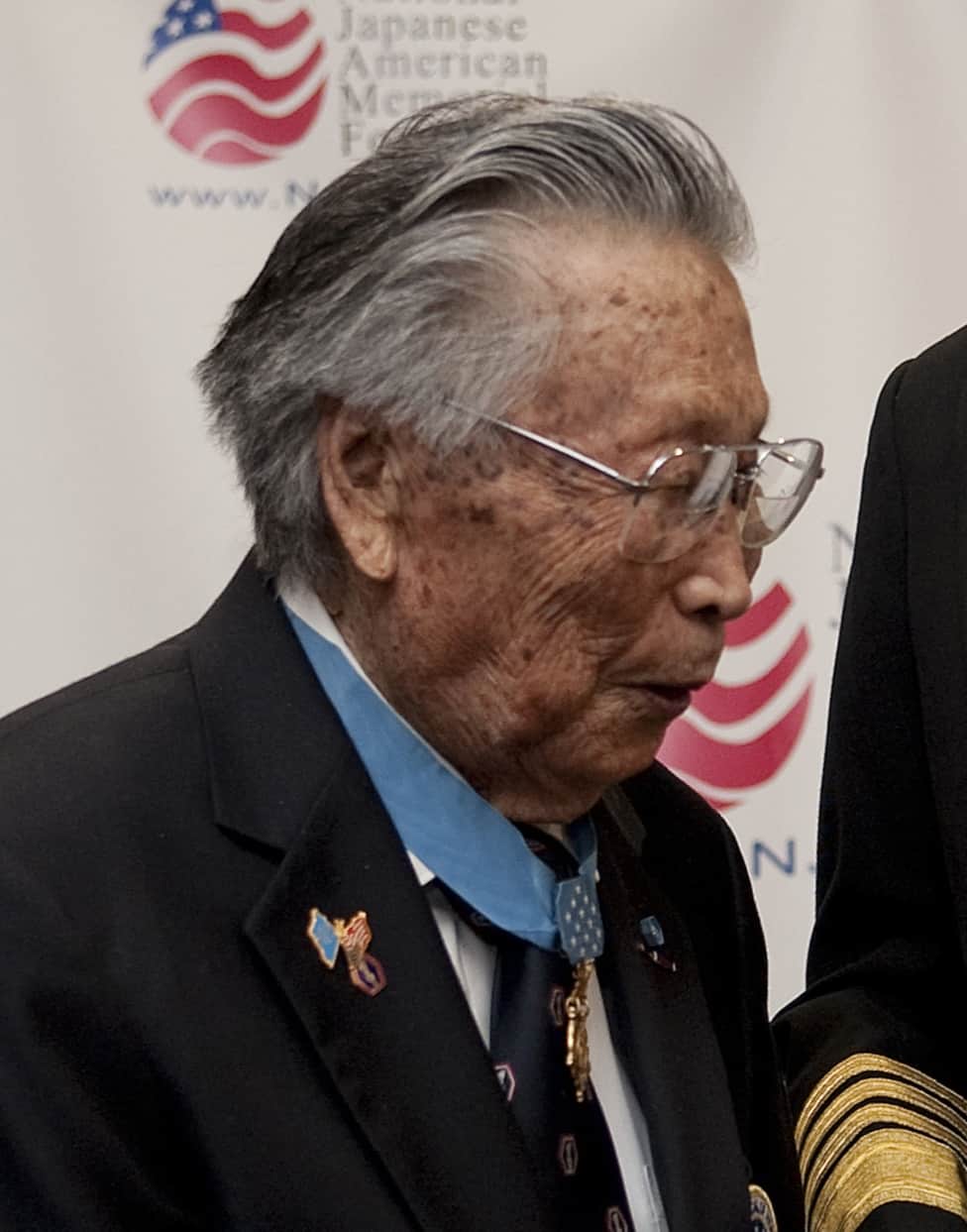
- Rank: Private
- War during which medal was earned: World War II
- Military branch: U.S. Army
- Medal of honor recipients attributed to state: 5 — 6th fewest
On hill 617 near Biffontaine, France in October 1944, Pvt. George T. Sakato led a successful charge against enemy strongpoints under heavy enemy fire, inspiring his platoon with his courage and relentless tactics. He personally, using a P-38 pistol and an enemy rifle, neutralized multiple German strong points, dispatching 12 enemies, wounding two, and capturing four, as he aided his platoon in taking numerous prisoners. His actions turned a potential defeat into a victory.
Vermont: Lawson Paterson “Red” Ramage

- Rank: Commander
- War during which medal was earned: World War II
- Military branch: U.S. Navy
- Medal of honor recipients attributed to state: 47 — 18th most
While leading the USS. Parche on July 31, 1944, Submarine Cmdr. Lawson Paterson Ramage executed a daring pre-dawn assault on a heavily guarded Japanese convoy. He penetrated the convoy’s defenses, inflicted severe damage on several vessels, and caused chaos amid the enemy’s ranks. Despite facing intense enemy fire, he skillfully navigated his submarine clear of a potential collision with an incoming transport, all while managing to land decisive hits on it. This relentless 46-minute encounter concluded with the Parche and its crew victorious and unscathed while sinking four ships.
Virginia: Desmond Thomas Doss
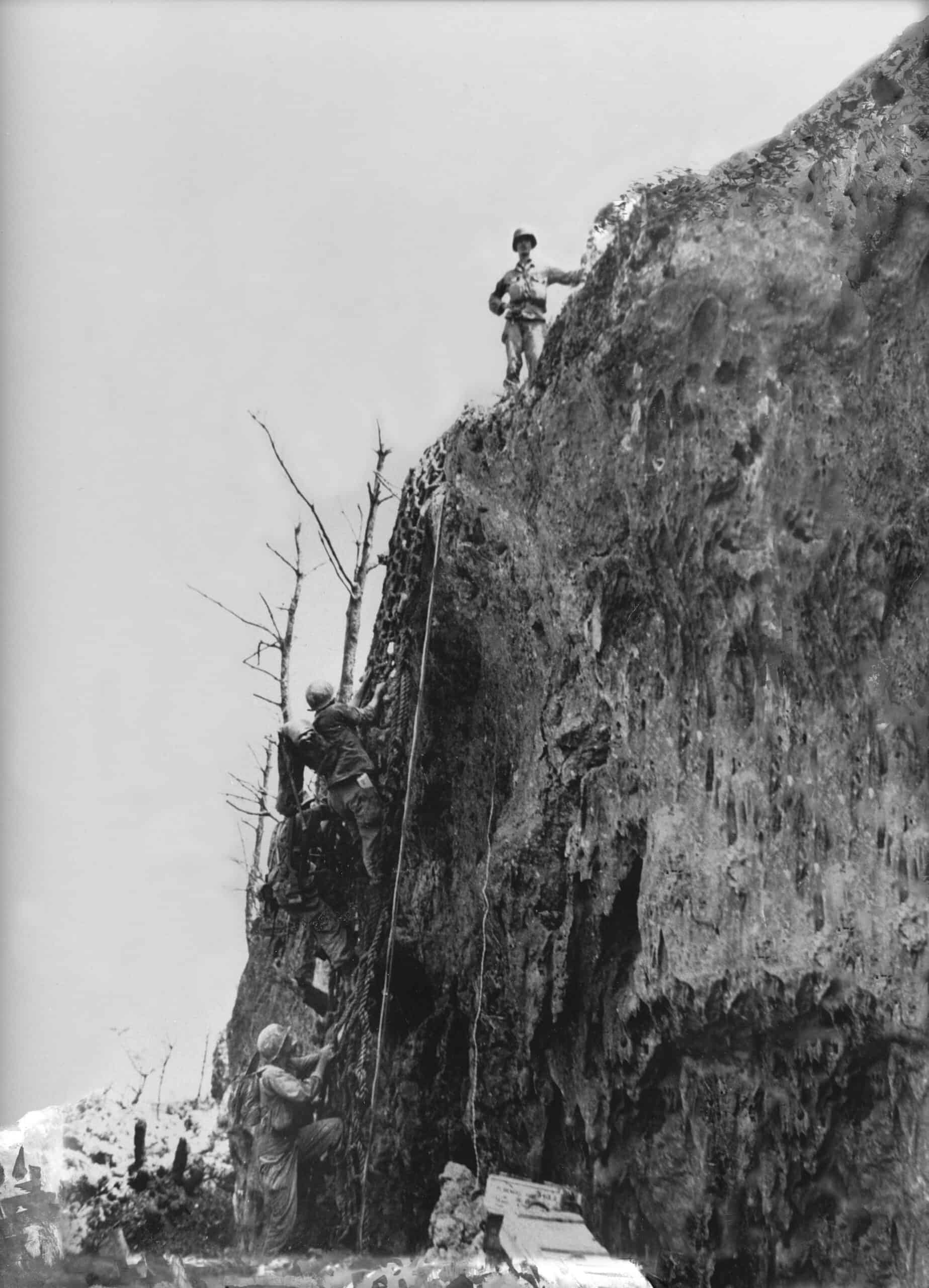
- Rank: Private First Class
- War during which medal was earned: World War II
- Military branch: U.S. Army
- Medal of honor recipients attributed to state: 50 — 17th most
Pvt. 1st Class Desmond Thomas Doss, a devout Seventh-Day Adventist, was a conscientious objector who refused to carry a rifle. During the 1st Battalion’s attack on a 400-foot escarpment, Doss, a company aidman, stayed amid heavy artillery and gunfire to help injured soldiers, even when others retreated. He at one point rescued 75 injured men by lowering them from the escarpment. His actions were captured in the film “Hacksaw Ridge.”
Washington: Robert Eugene Bush
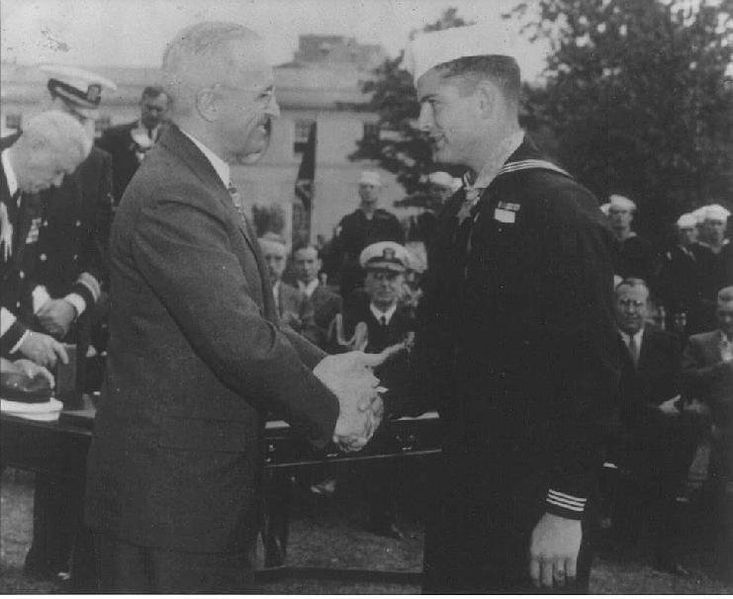
- Rank: Hospital Apprentice First Class
- War during which medal was earned: World War II
- Military branch: U.S. Naval Reserve Force
- Medal of honor recipients attributed to state: 31 — 25th most
On May 2, 1945, during the conflict with Japanese forces on Okinawa Jima, Hospital Apprentice 1st Class Robert Eugene Bush tended to the wounded amid enemy machine guns, mortar, and artillery fire. During a fierce counterattack, despite losing an eye and being seriously wounded, he managed to hold off the enemy, taking down six combatants and safeguarding a wounded marine officer. Ignoring his own critical condition, he prioritized others’ care over his own.
West Virginia: Hershel Woodrow “Woody” Williams

- Rank: Corporal
- War during which medal was earned: World War II
- Military branch: U.S. Marine Corps Reserve
- Medal of honor recipients attributed to state: 45 — 20th most
On Feb. 23, 1945, demolition sergeant Cpl. Hershel Woodrow Williams served with the 21st Marines, 3d Marine Division, on Iwo Jima, Volcano Islands. Volunteering his services, he worked for four hours under high enemy fire to clear a path for the infantry through concrete pillboxes, mines, and volcanic sands. He repeatedly returned to his lines to prepare demolition charges and service flamethrowers, which he used to take out enemy positions. This effort contributed significantly to his company reaching its objective.
Wisconsin: Richard Ira Bong
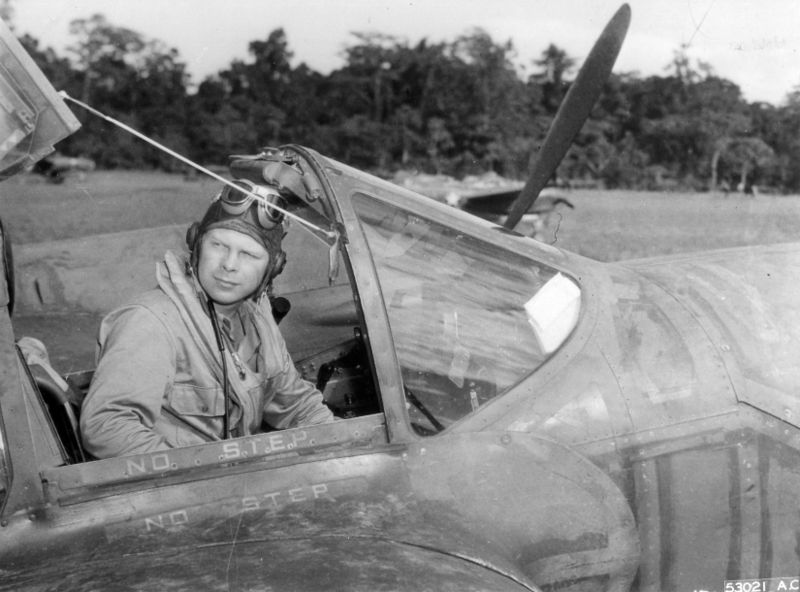
- Rank: Major
- War during which medal was earned: World War II
- Military branch: U.S. Army Air Corps
- Medal of honor recipients attributed to state: 50 — 16th most
Also known as the “Ace of Aces,” Maj. Richard Ira Bong was a top American fighter pilot during WWII, credited with downing 40 enemy aircraft. His remarkable achievement marks him as one of the most successful pilots of his time. In 1944, he was awarded the Medal of Honor by Gen. Douglas MacArthur, a fellow medal recipient whose medal is also attributed to Wisconsin.
Wyoming: Vernon Joseph Baker
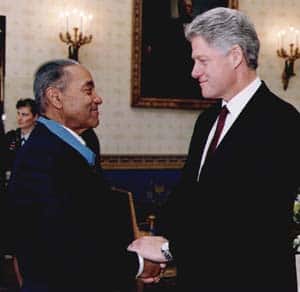
- Rank: First Lieutenant
- War during which medal was earned: World War II
- Military branch: U.S. Army
- Medal of honor recipients attributed to state: 3 — 4th fewest
On April 5 and 6, 1945, First Lt. Vernon J. Baker led his platoon towards Castle Aghinolfi, a German stronghold. He neutralized two observation post occupants and a machine gun crew, forcing a concealed dugout’s occupants to surrender. Amidst heavy enemy fire, he covered the withdrawal of injured soldiers and eliminated three machine gun positions, an observation post, and a dugout. Baker led a battalion advance through enemy territory the following night. His actions accounted for nine dispatched enemy soldiers and the dismantling of significant enemy positions.
Sponsored: Want to Retire Early? Here’s a Great First Step
Want retirement to come a few years earlier than you’d planned? Orare you ready to retire now, but want an extra set of eyes on your finances?
Now you can speak with up to 3 financial experts in your area for FREE. By simply clicking here you can begin to match with financial professionals who can help you build your plan to retire early. And the best part? The first conversation with them is free.
Click here to match with up to 3 financial pros who would be excited to help you make financial decisions.
Thank you for reading! Have some feedback for us?
Contact the 24/7 Wall St. editorial team.
